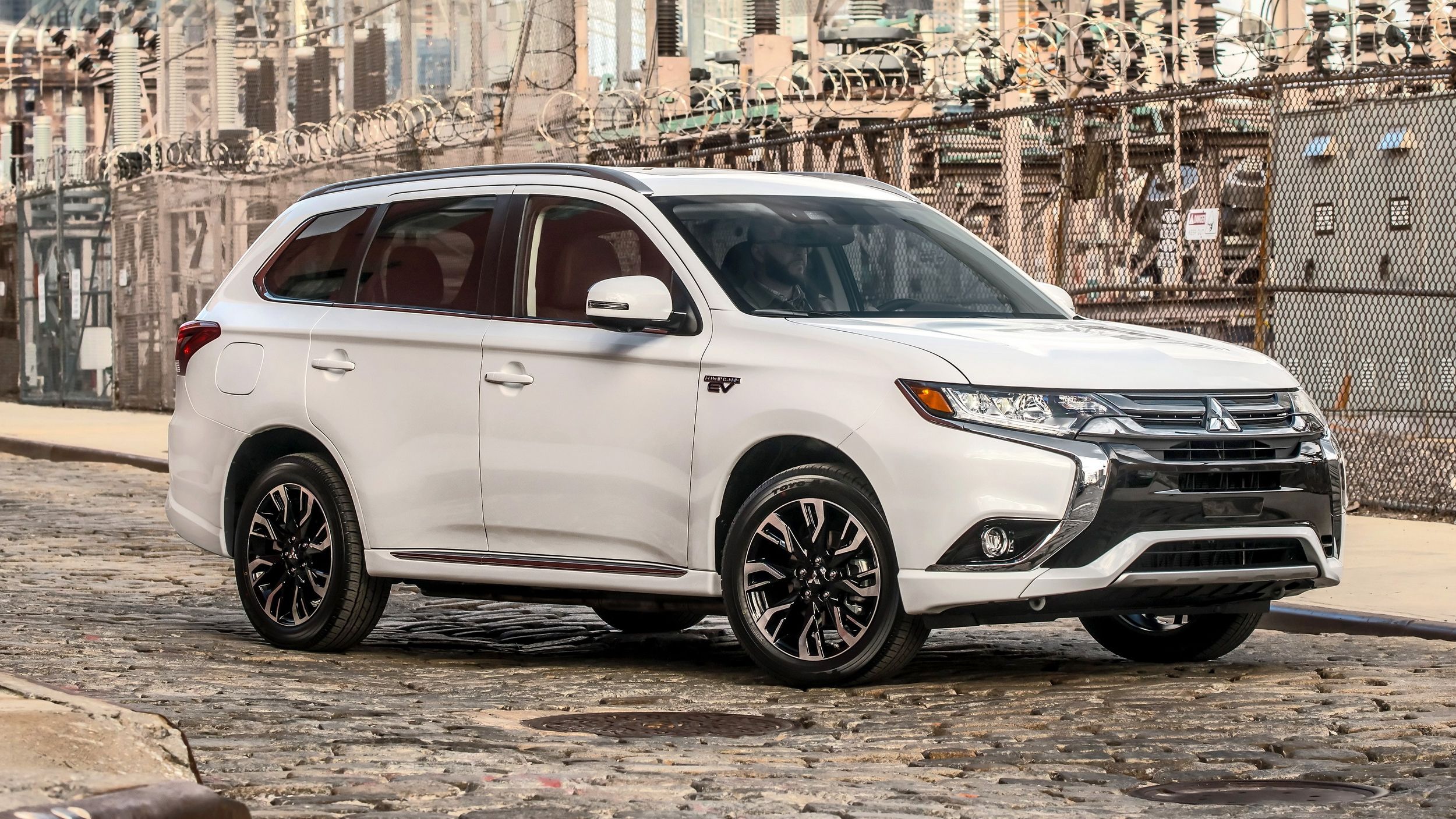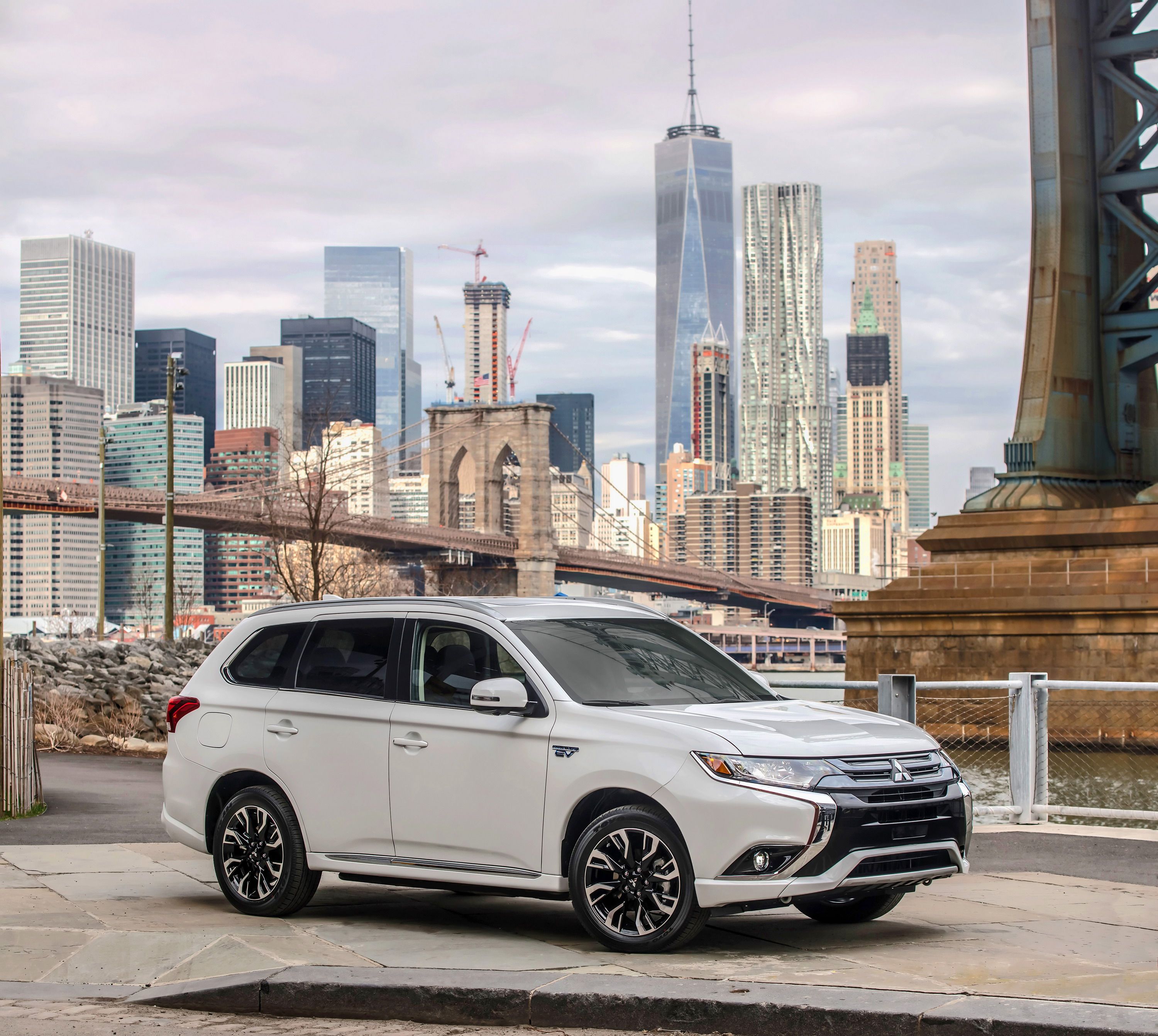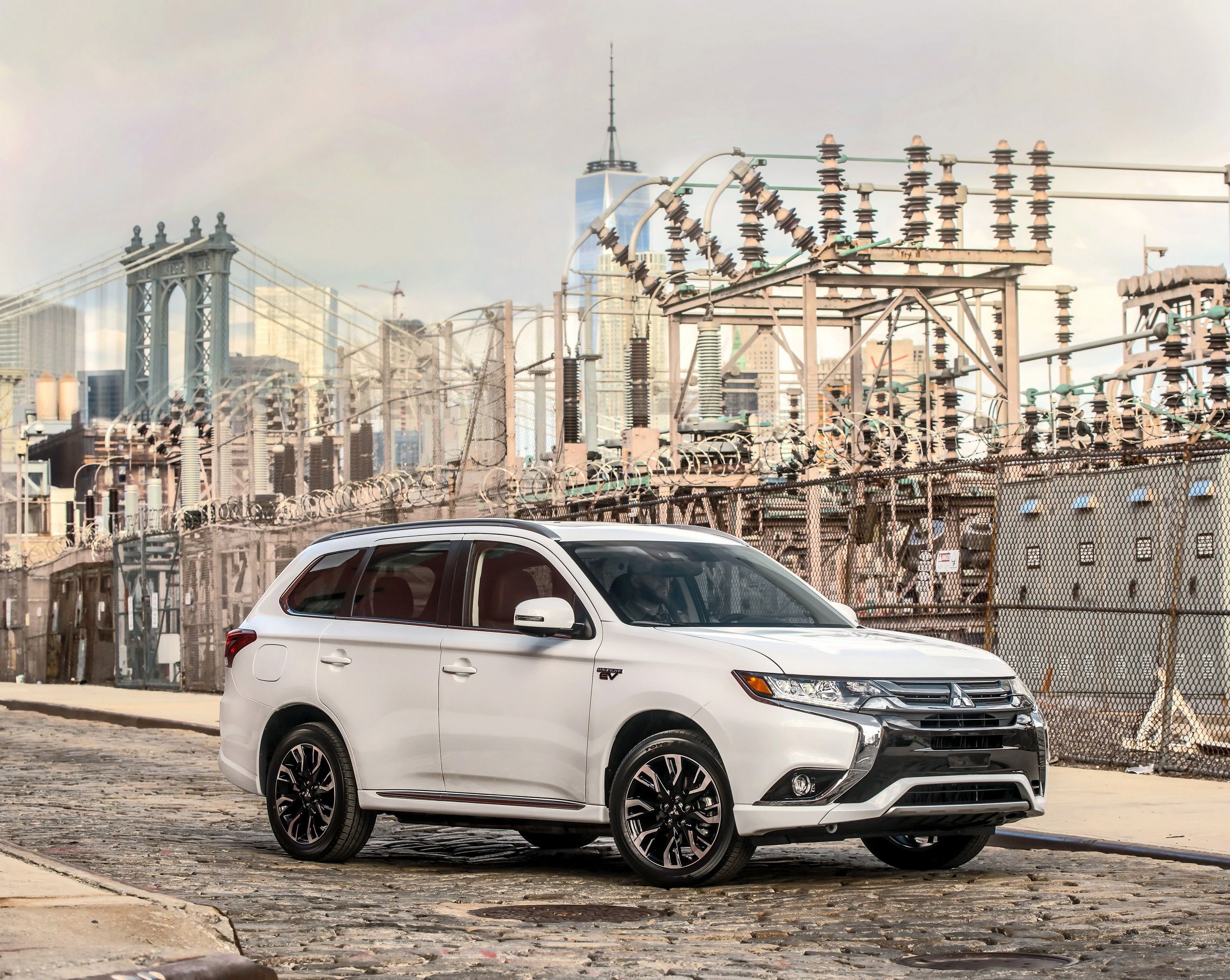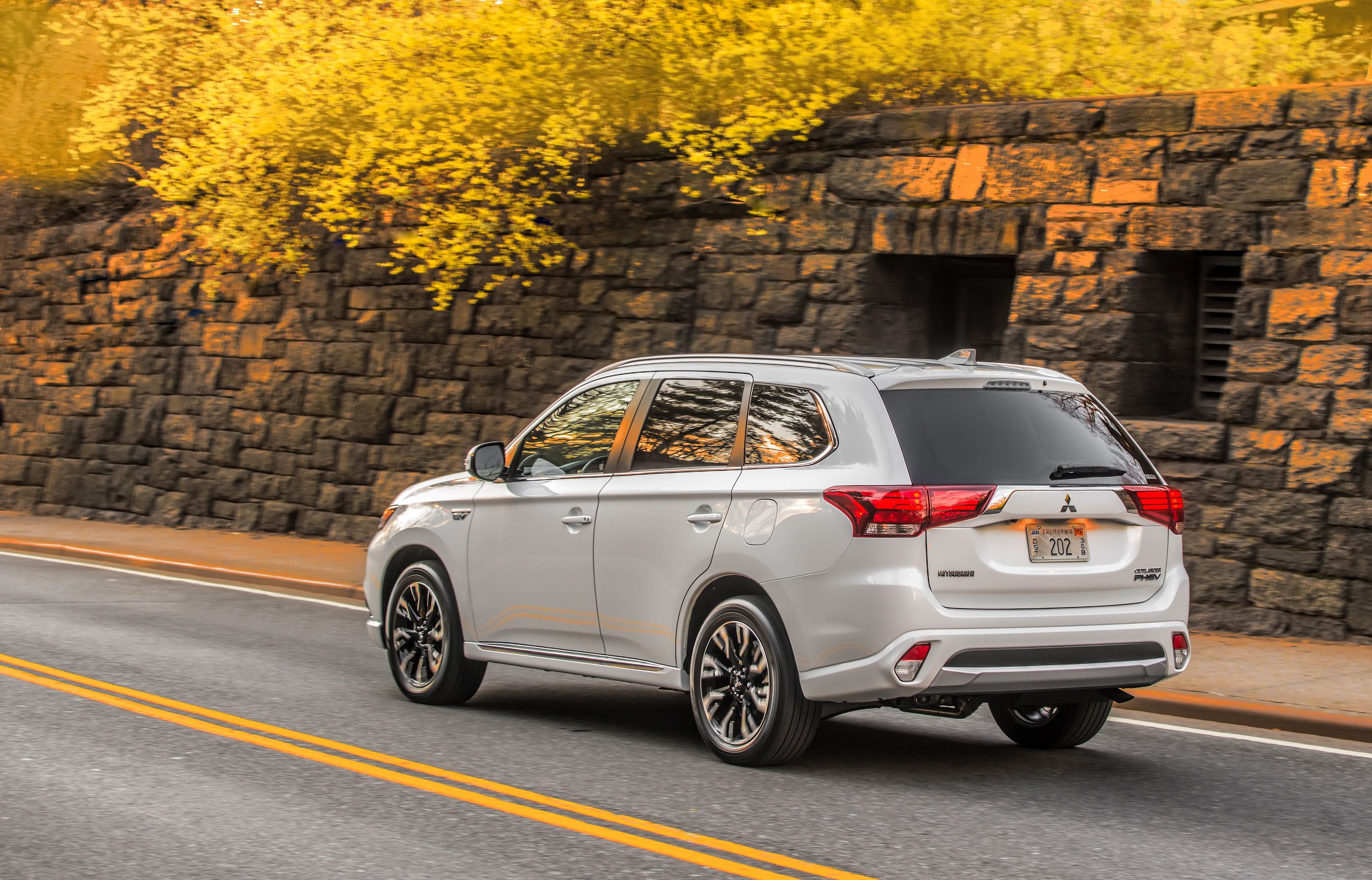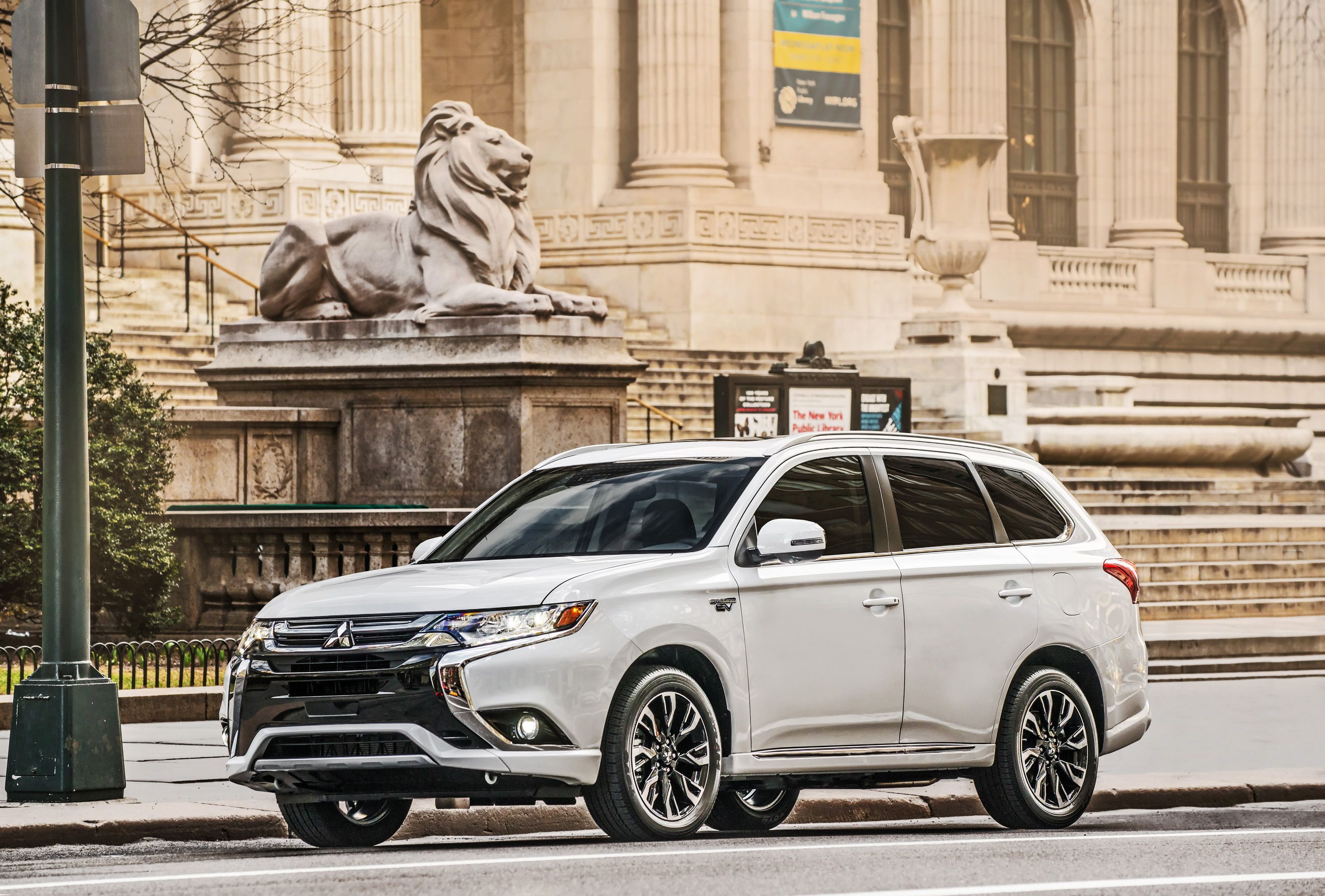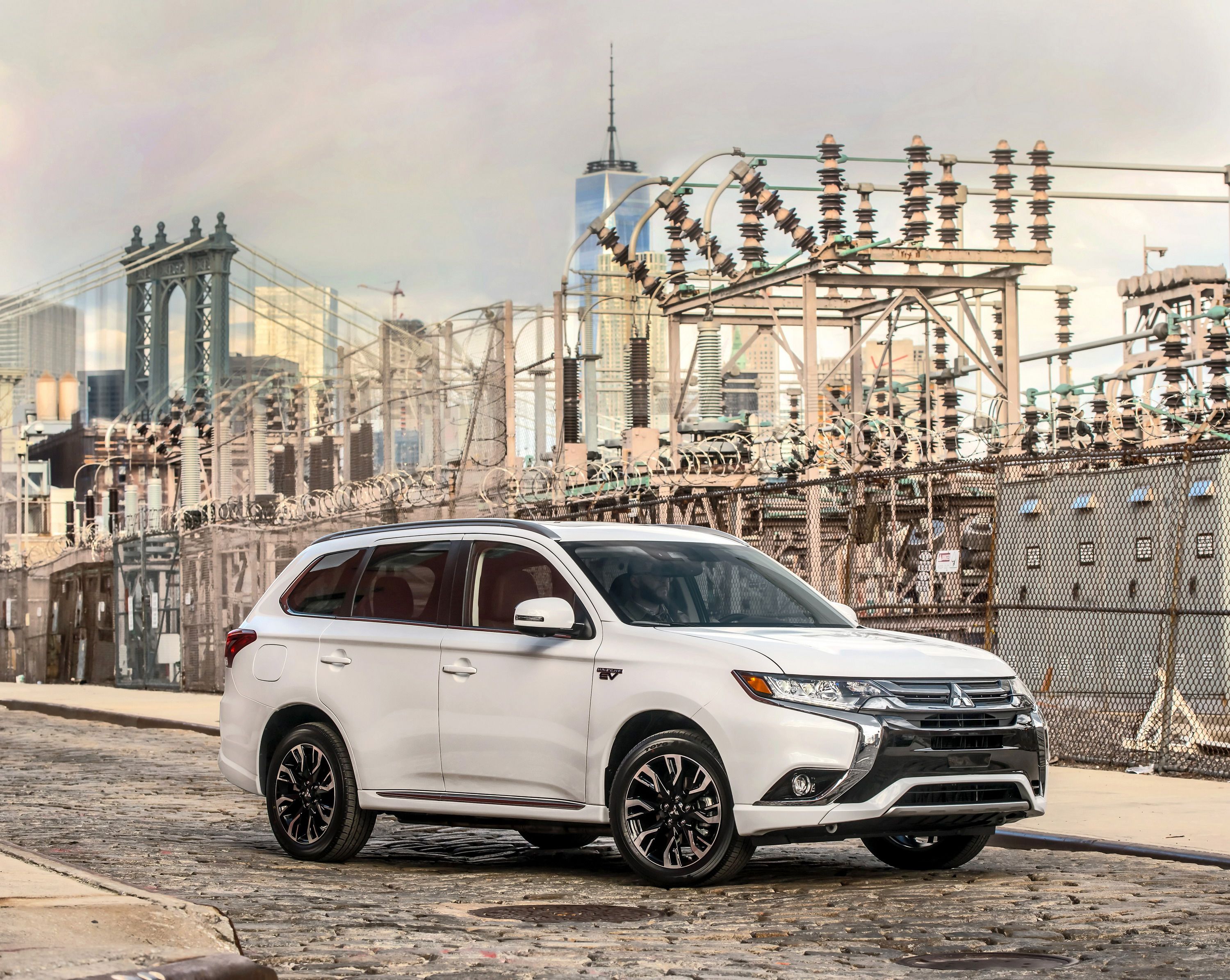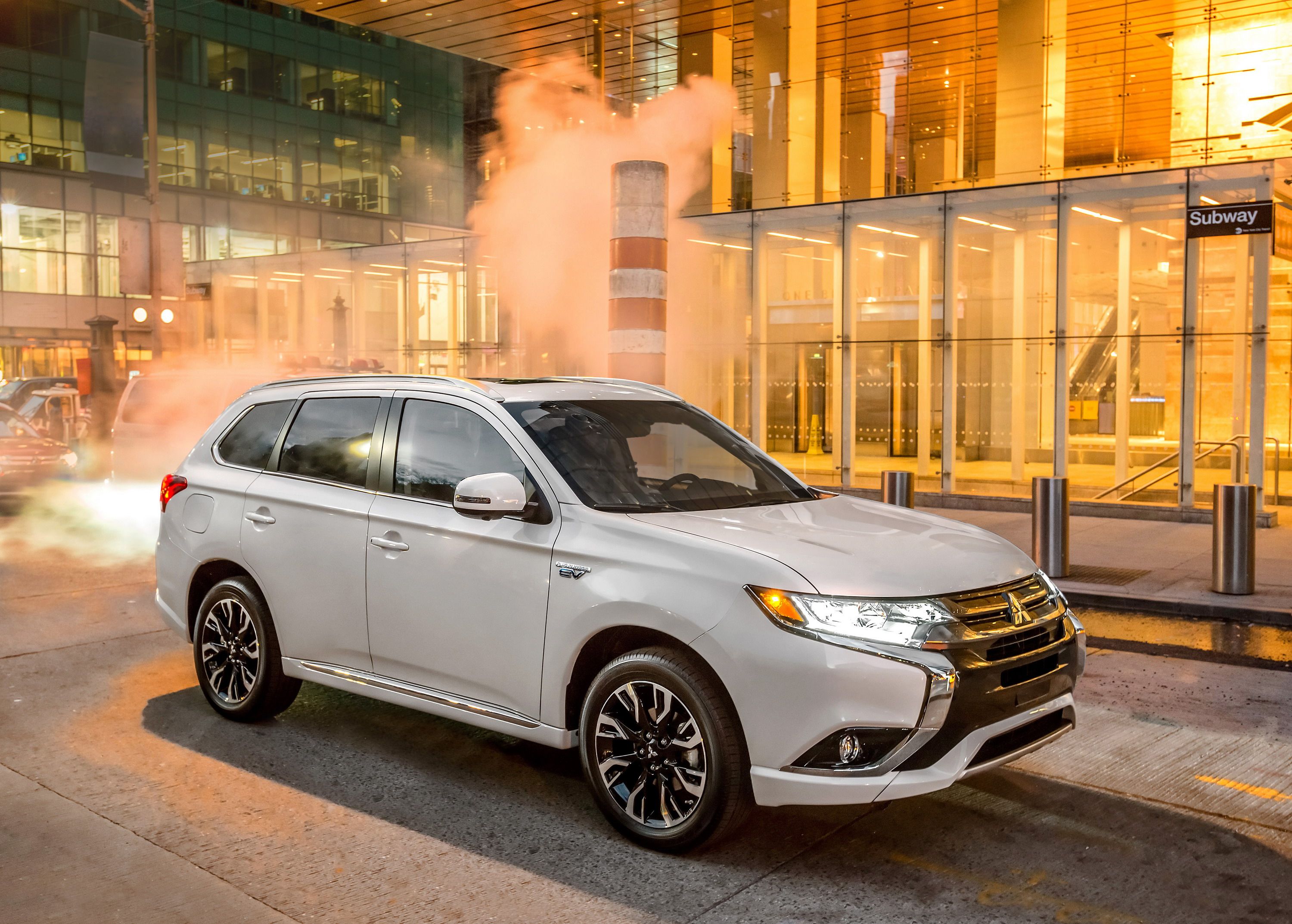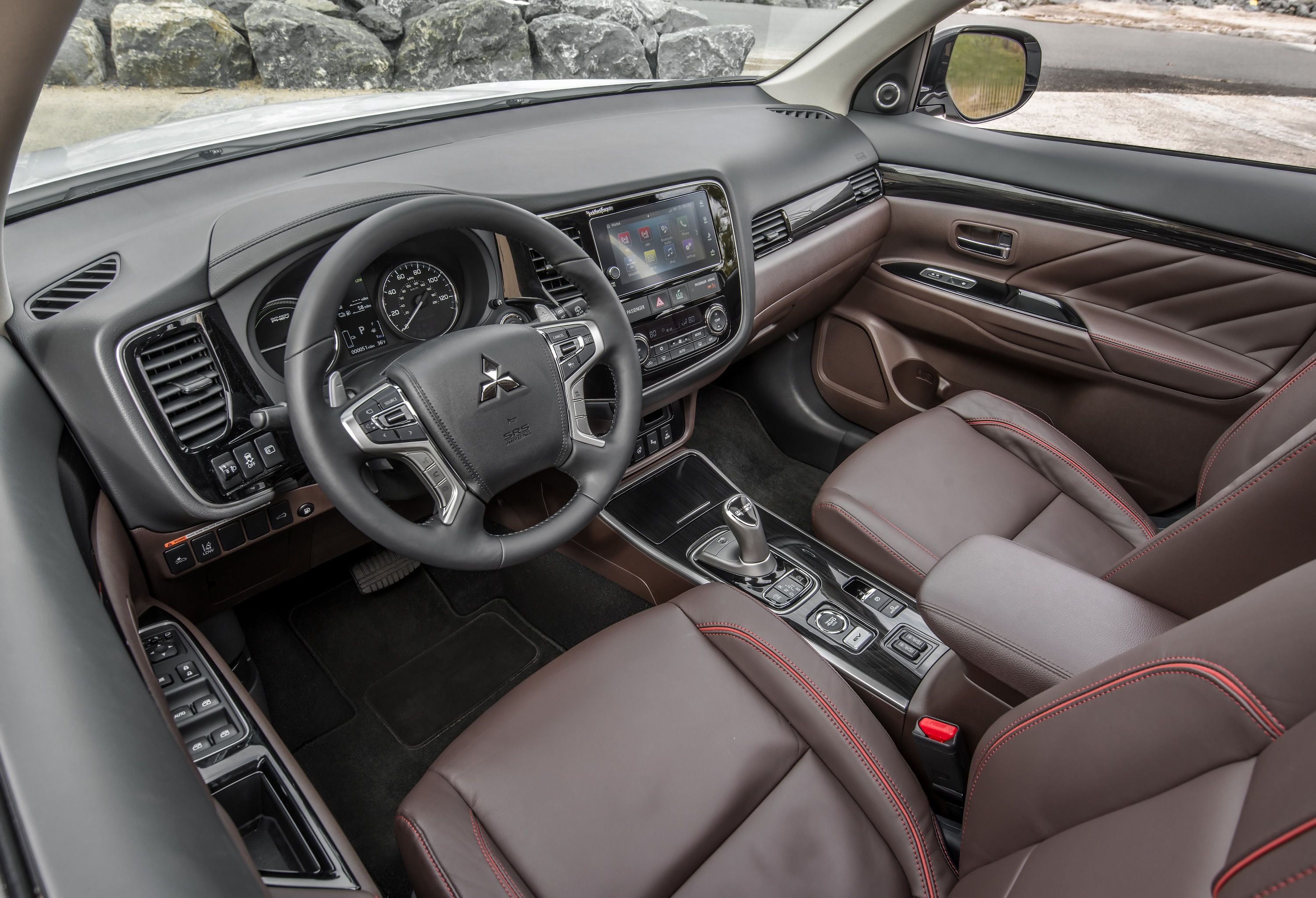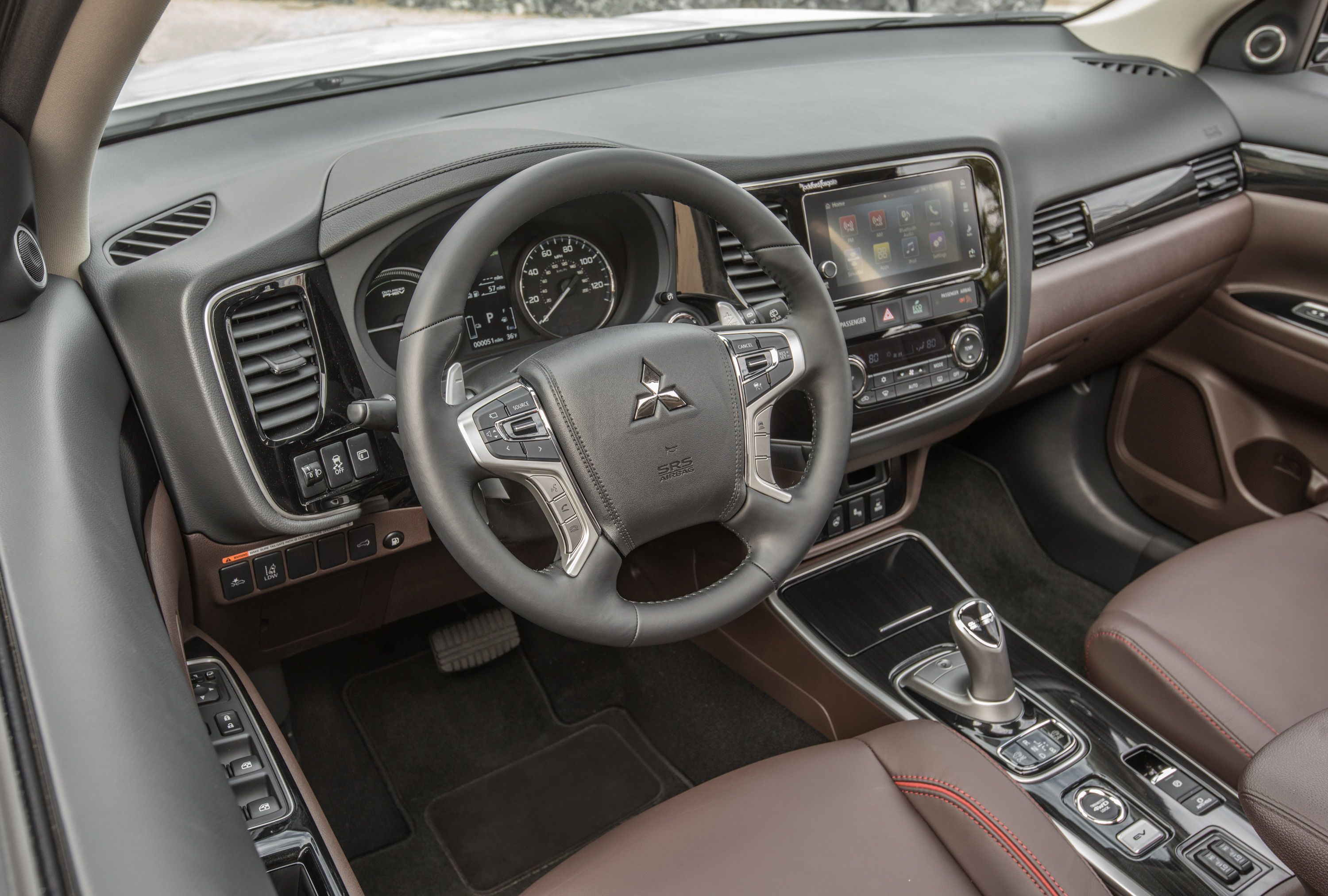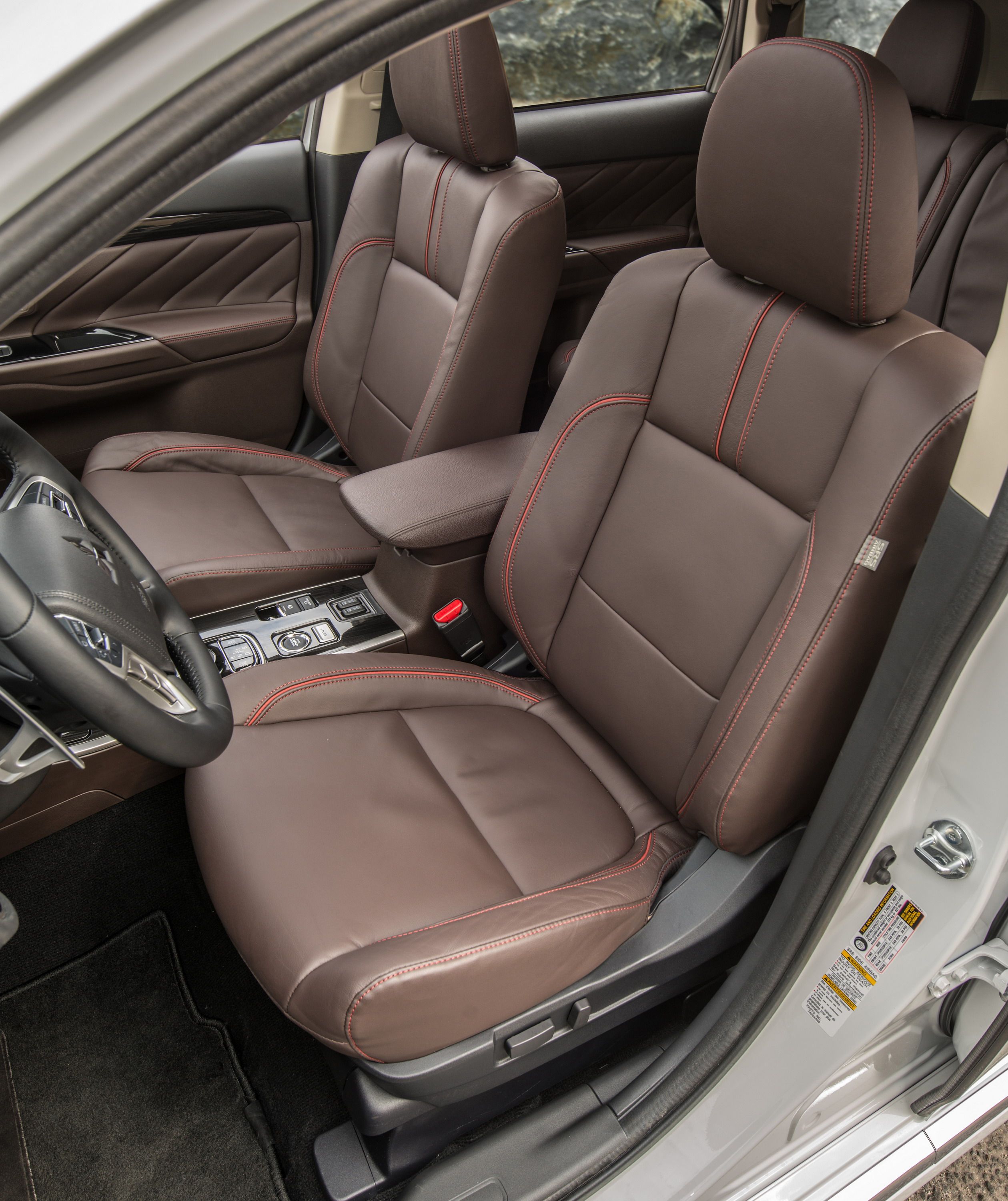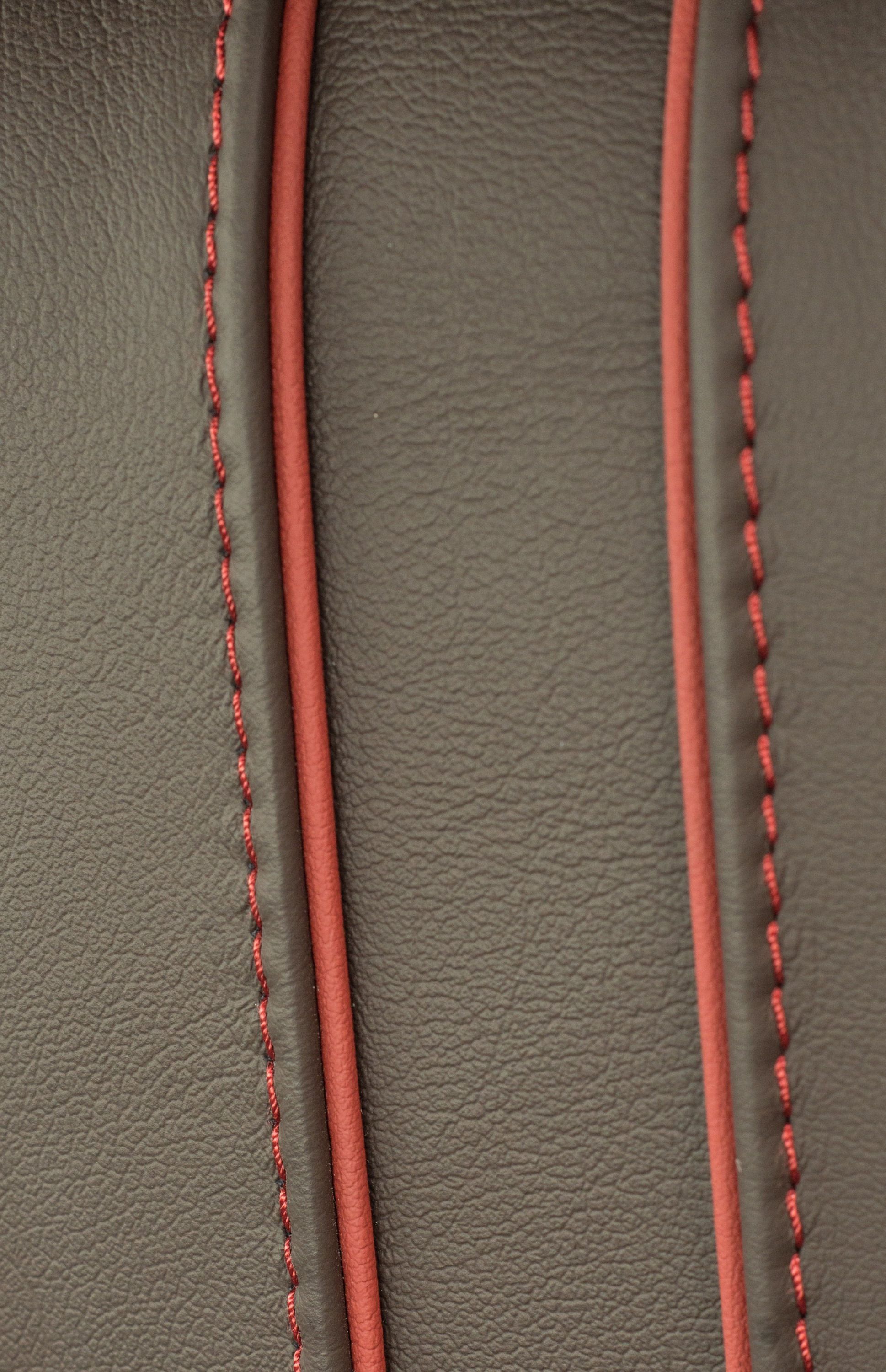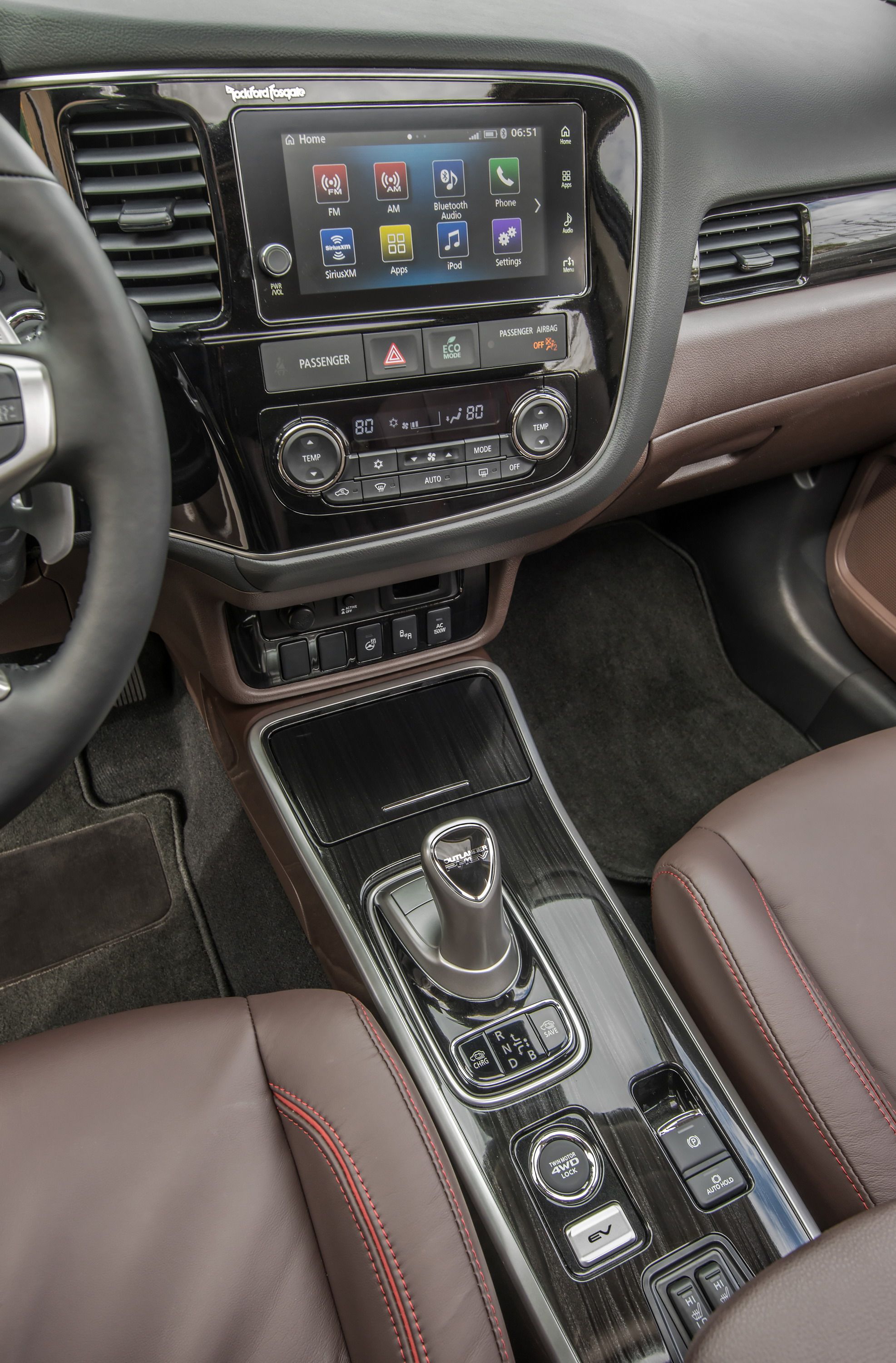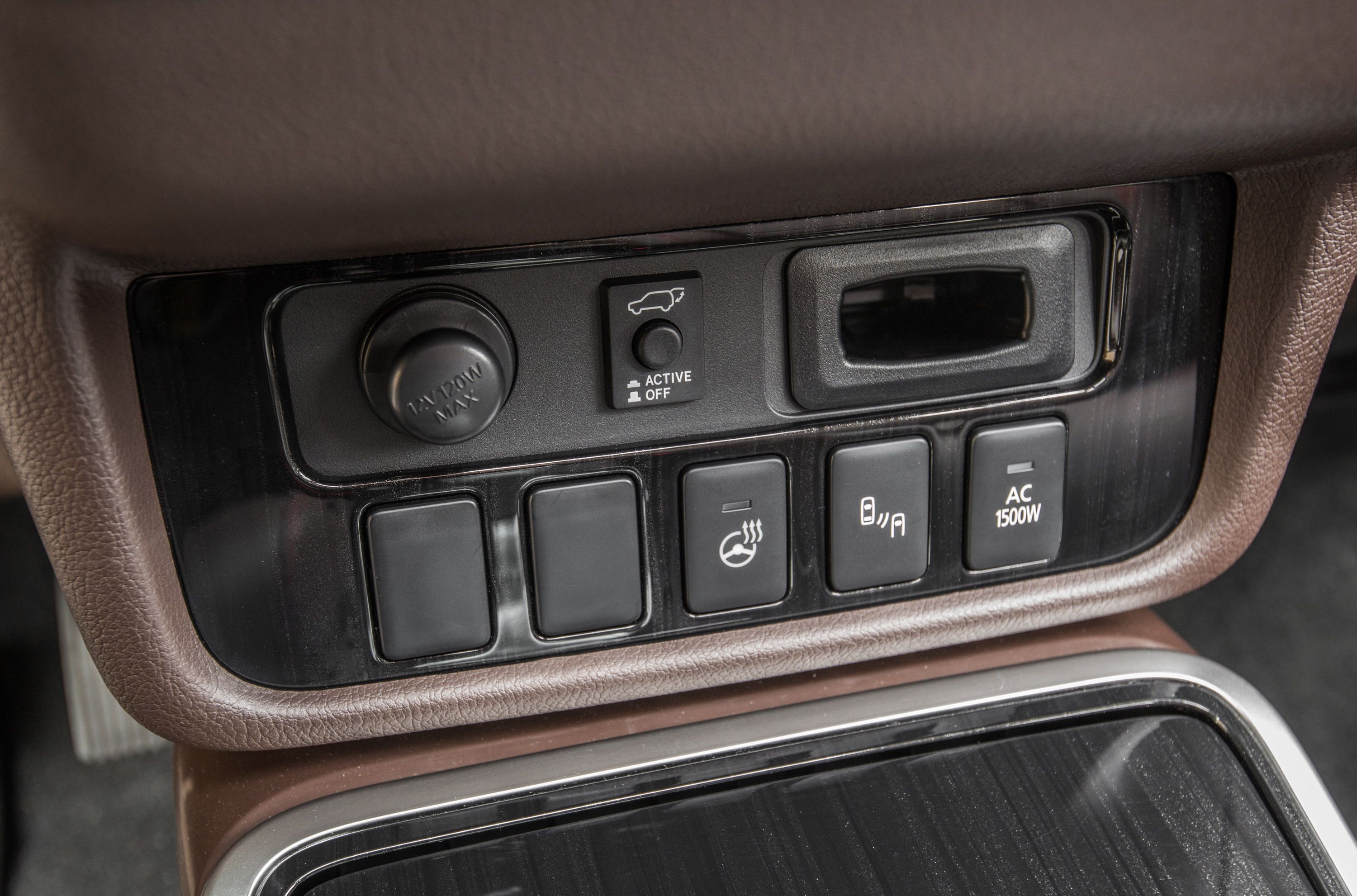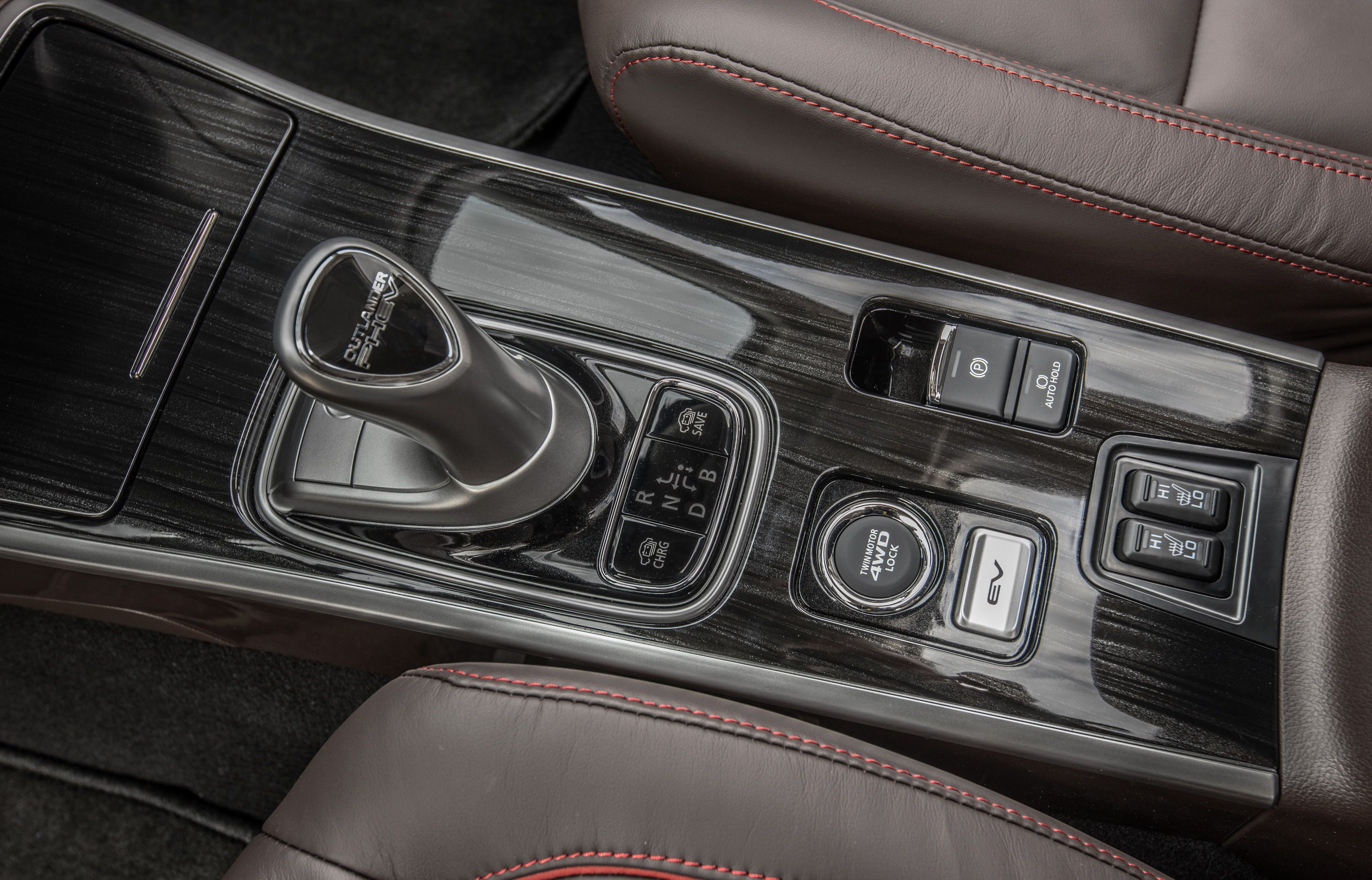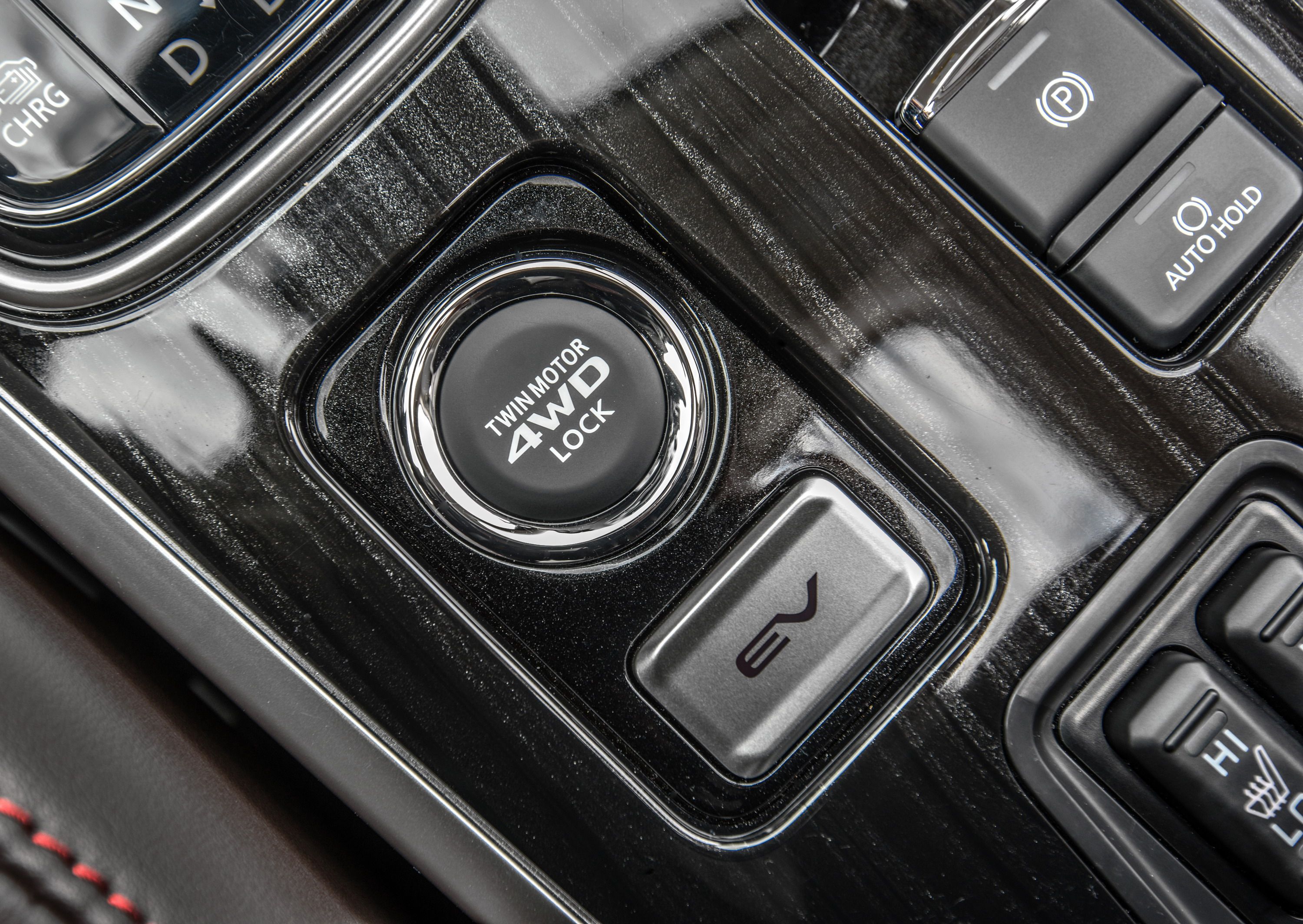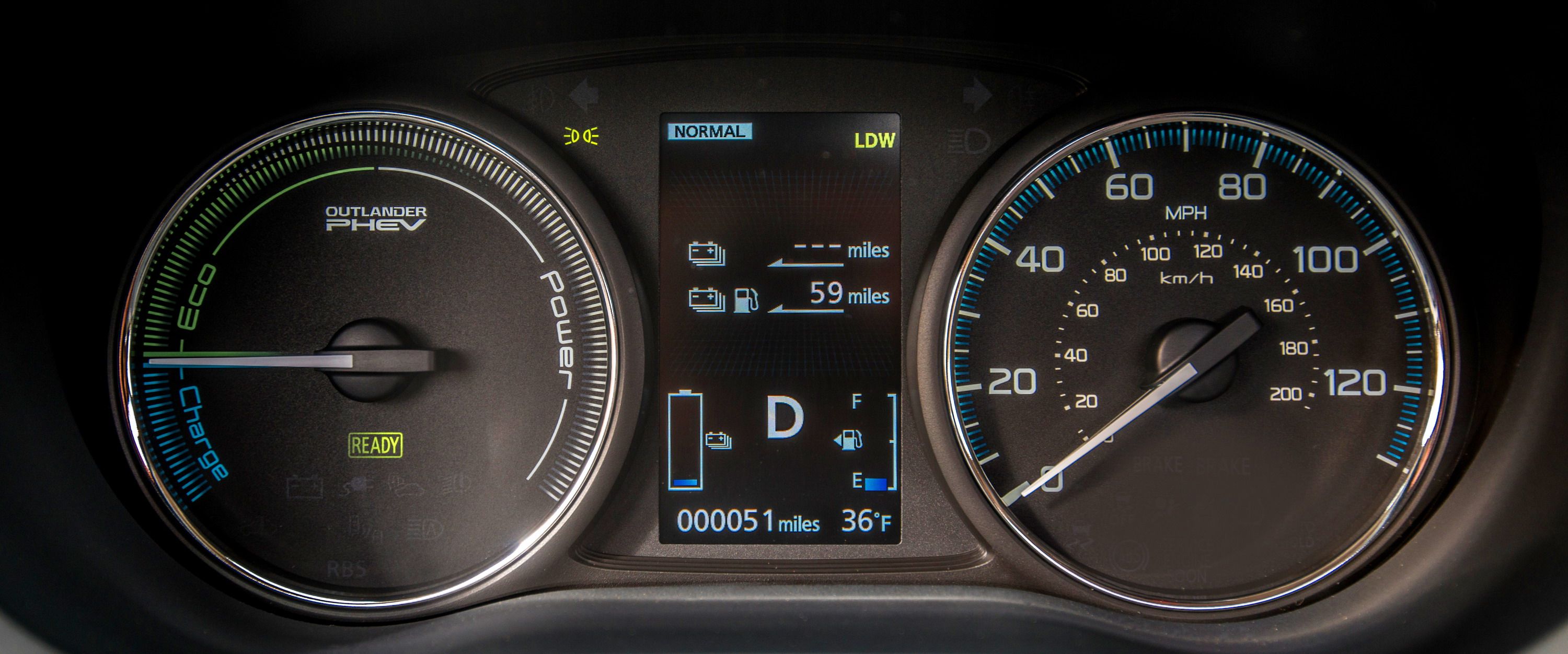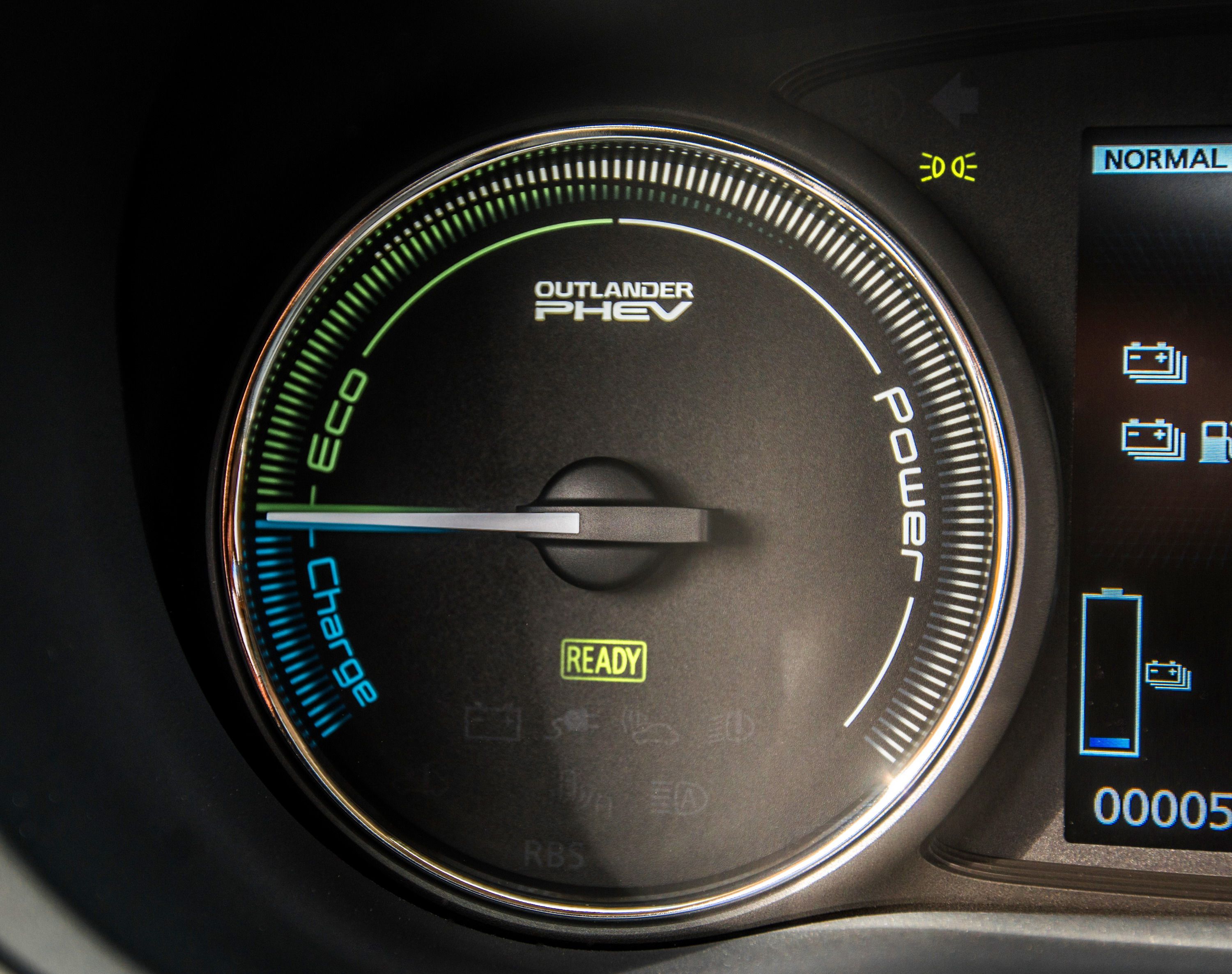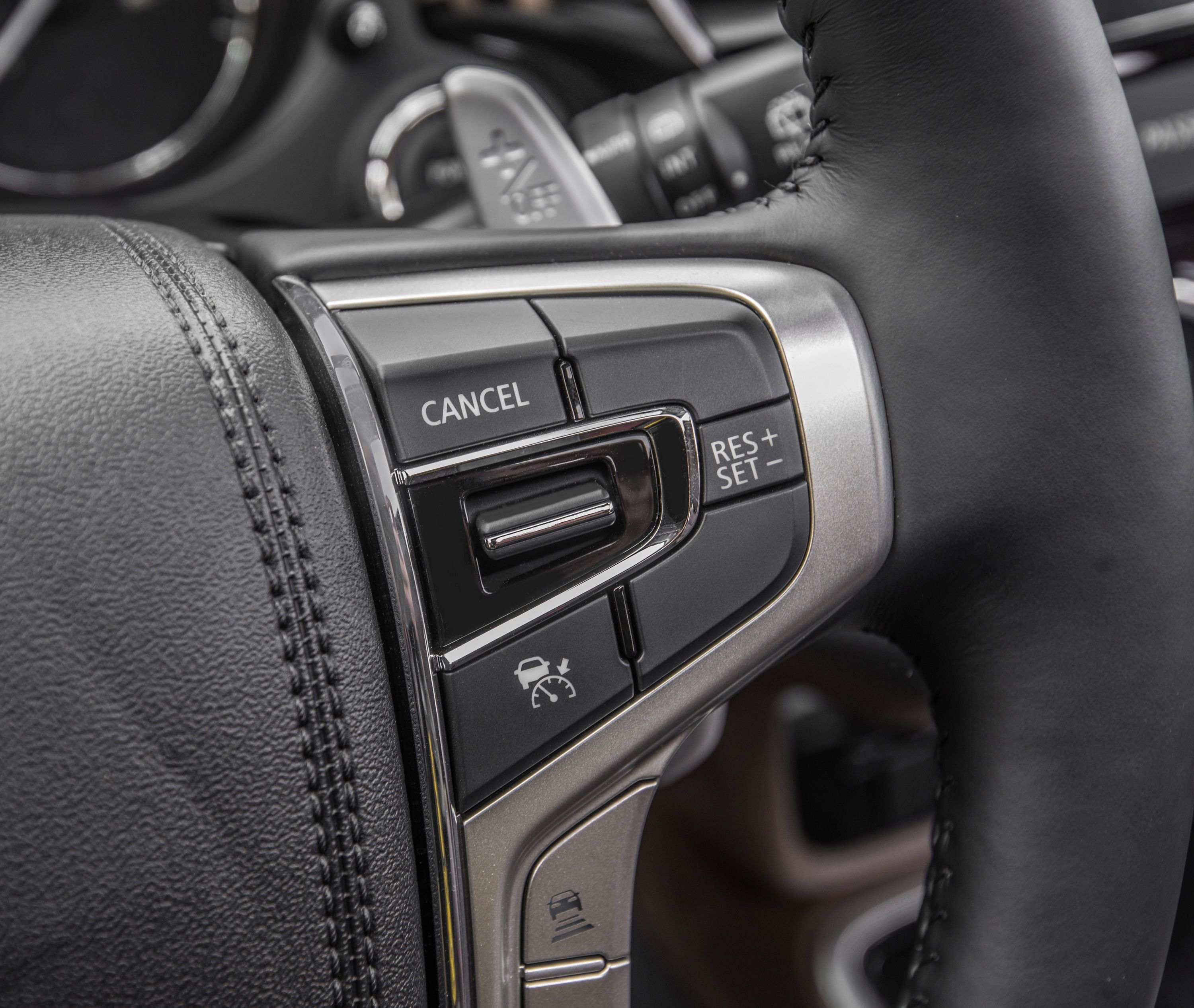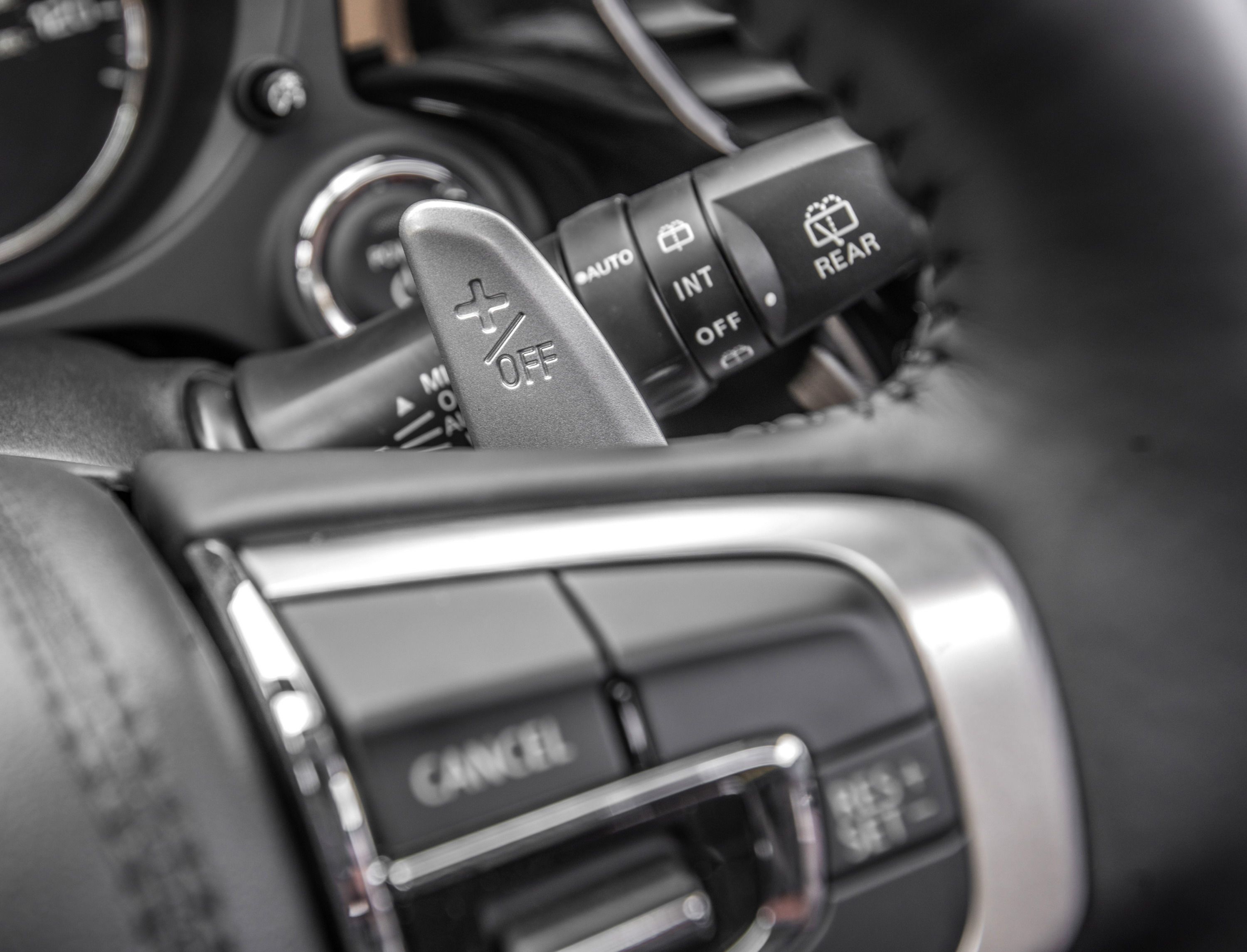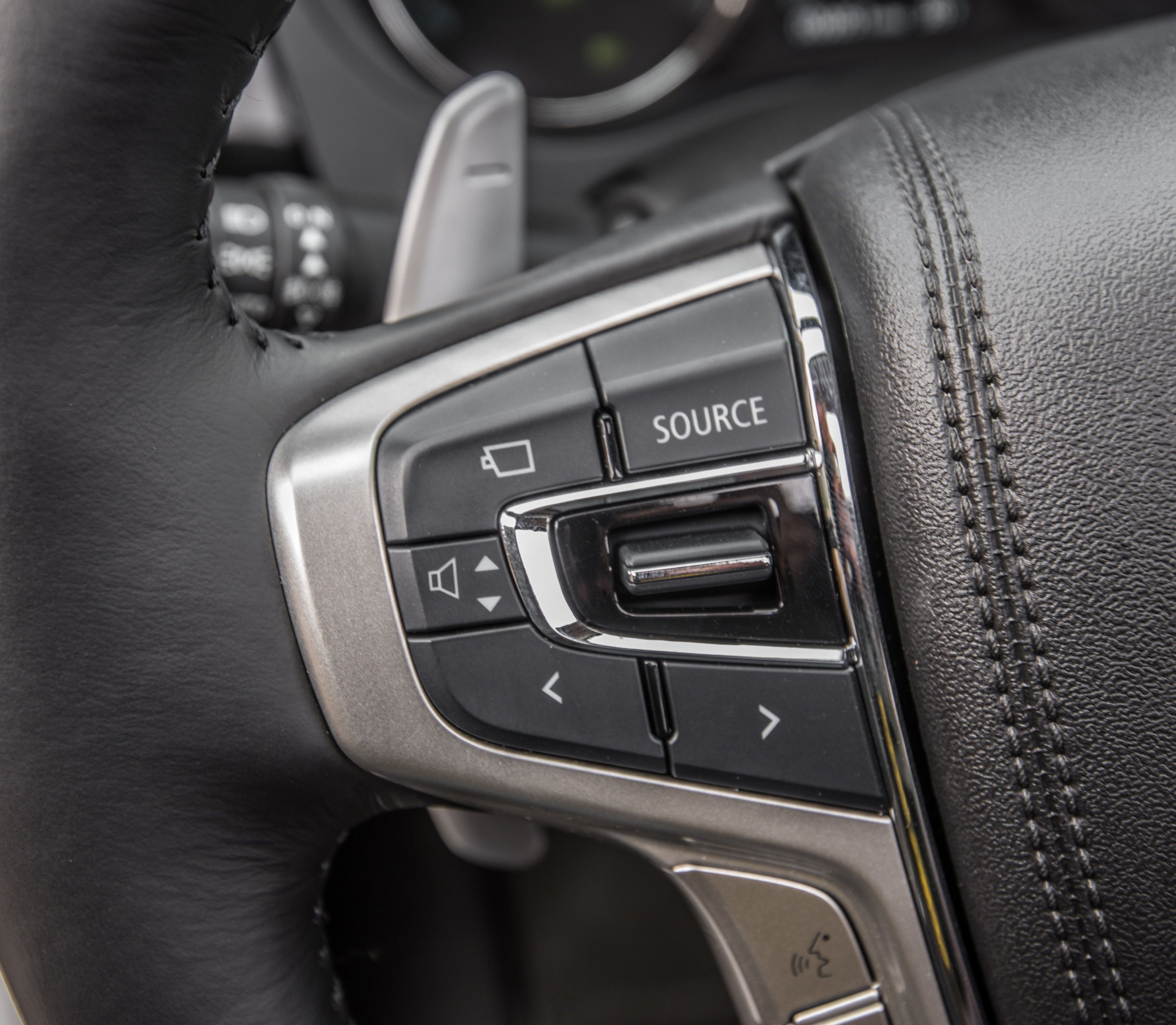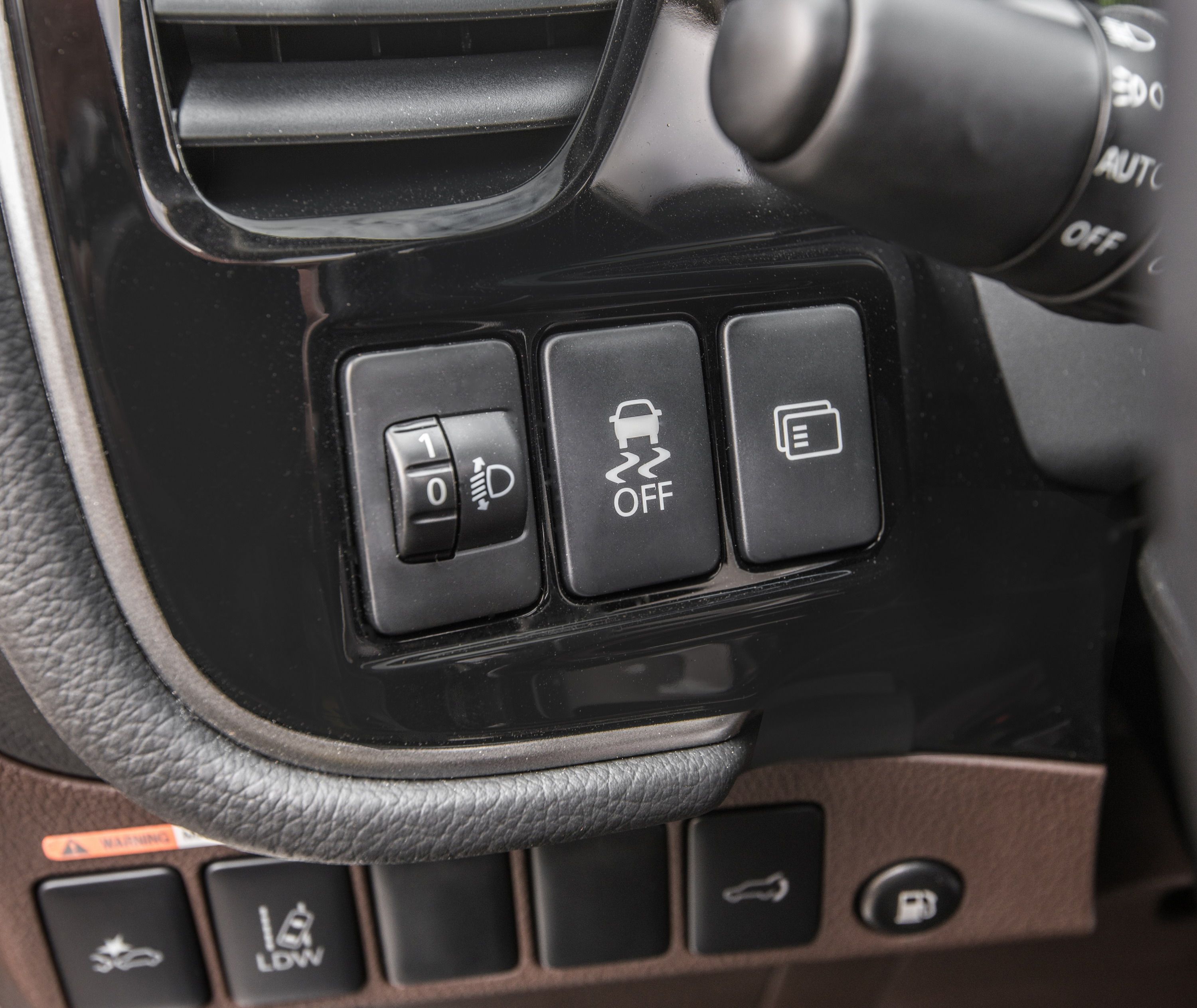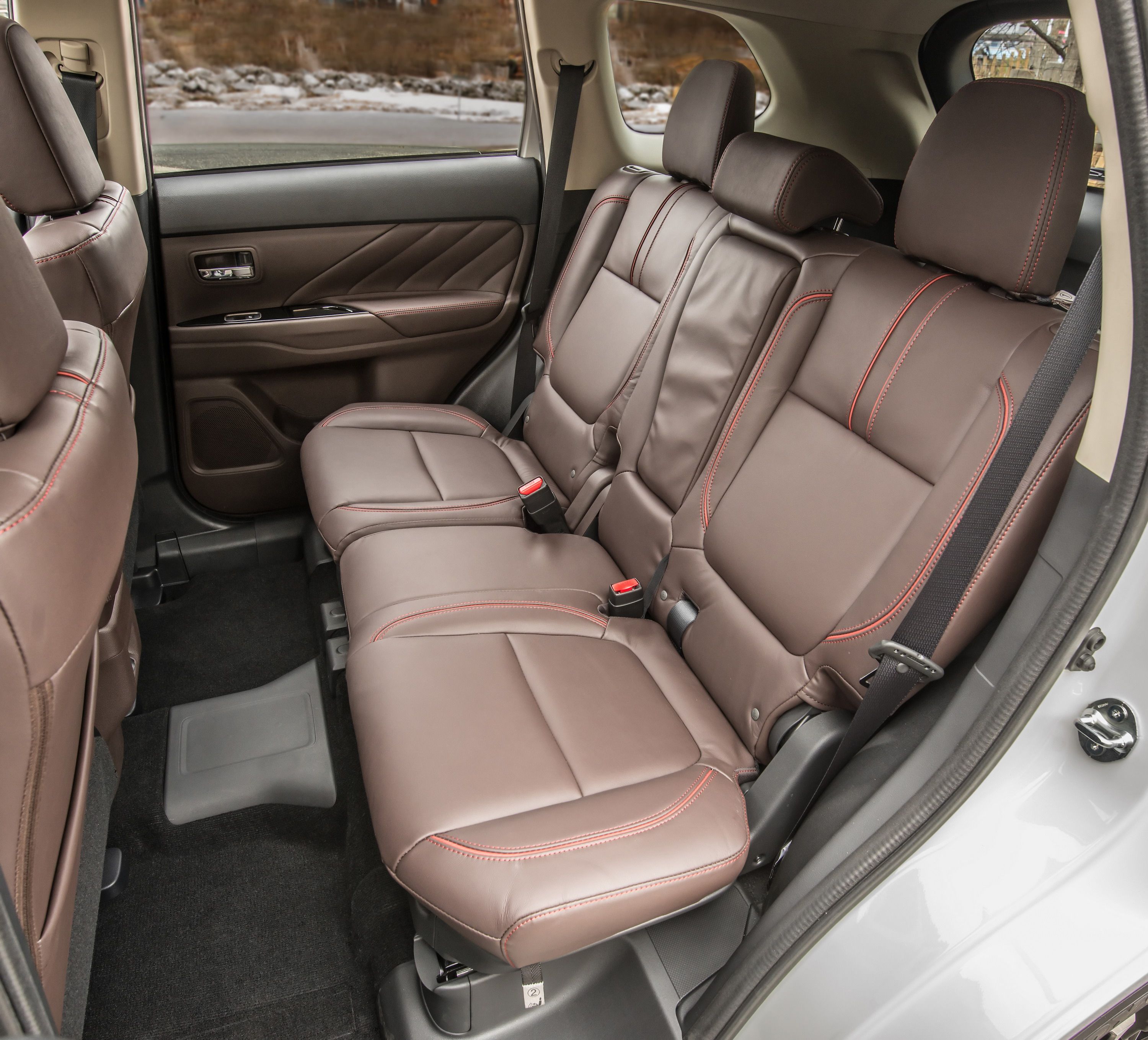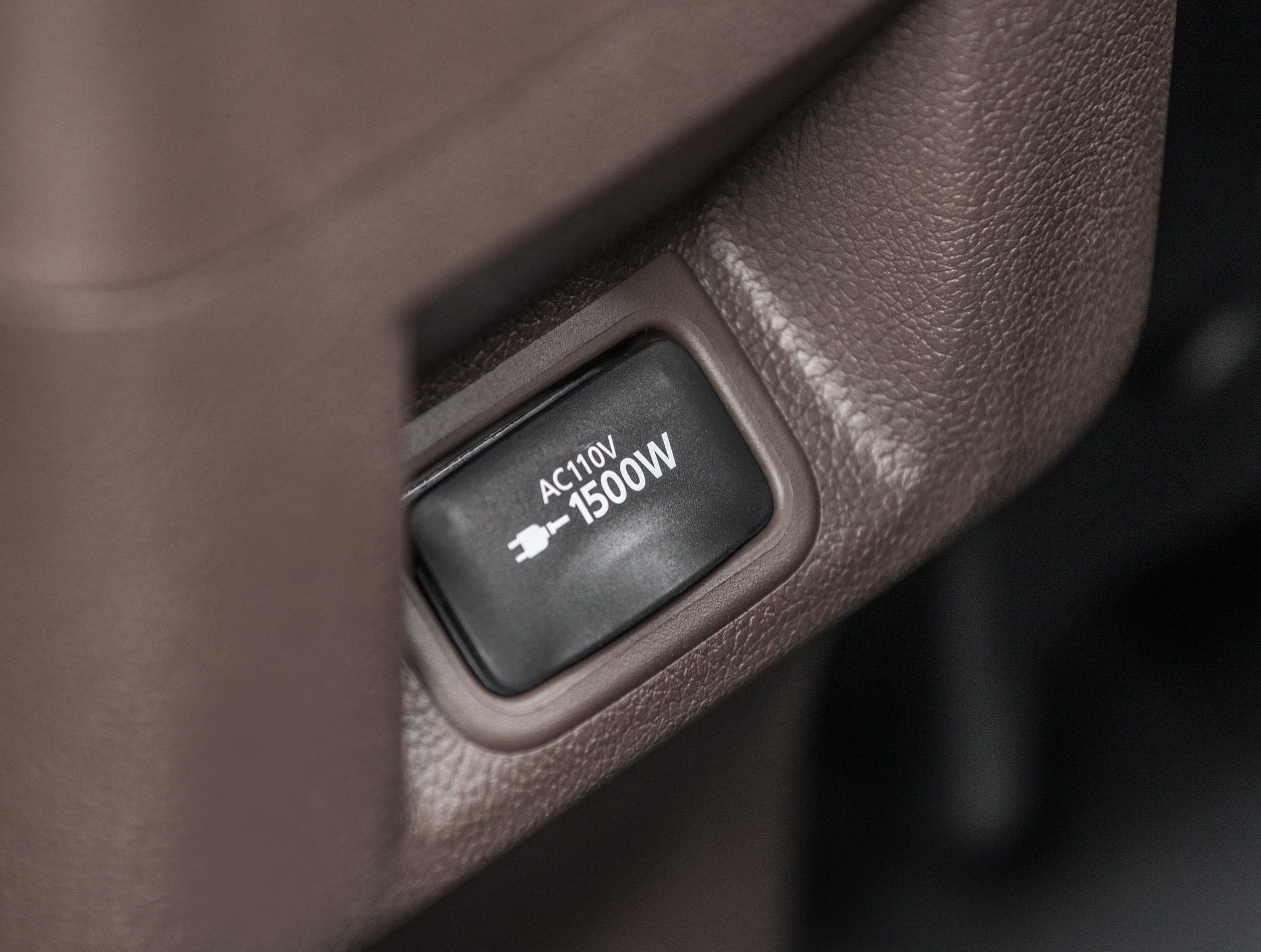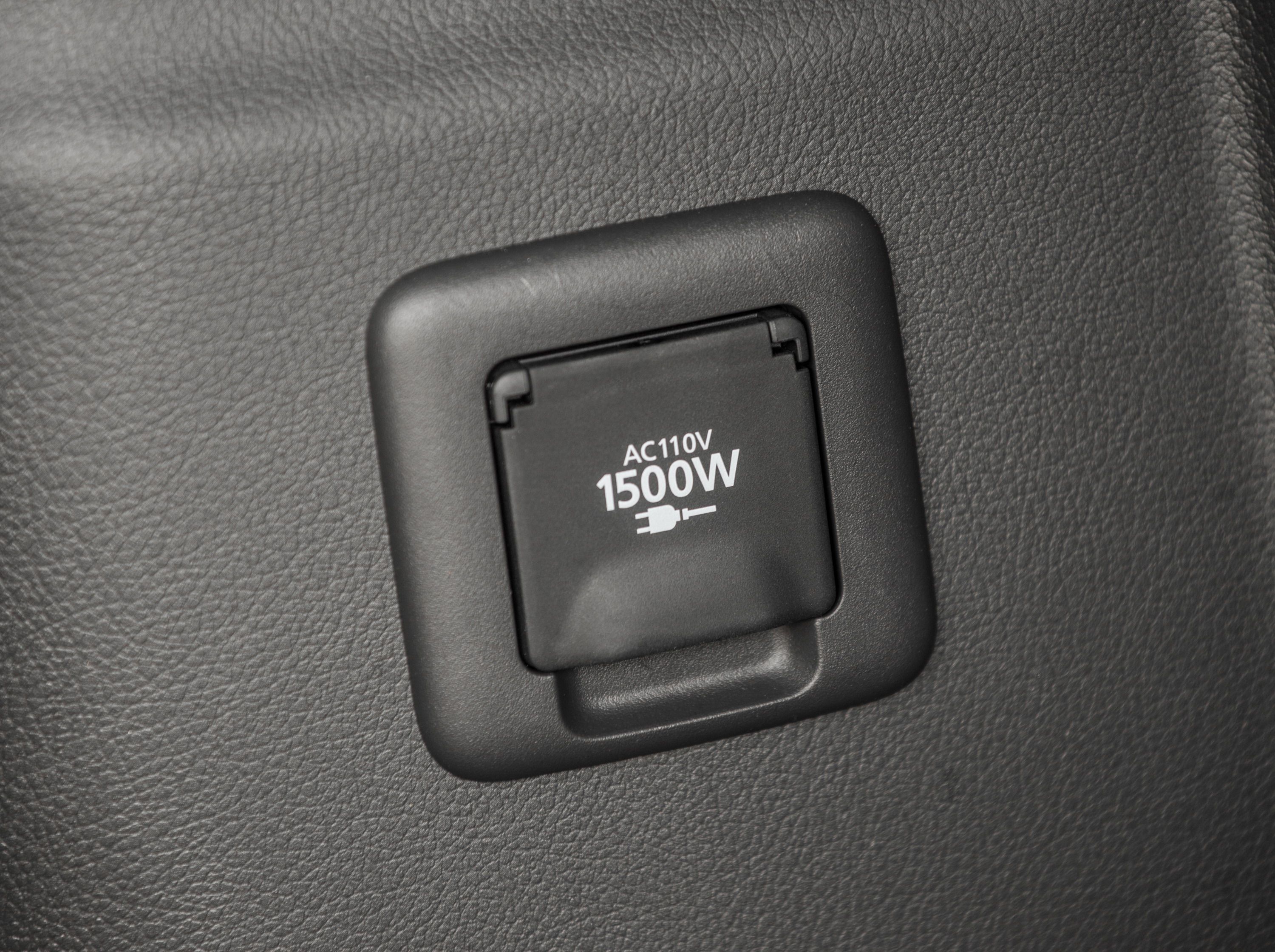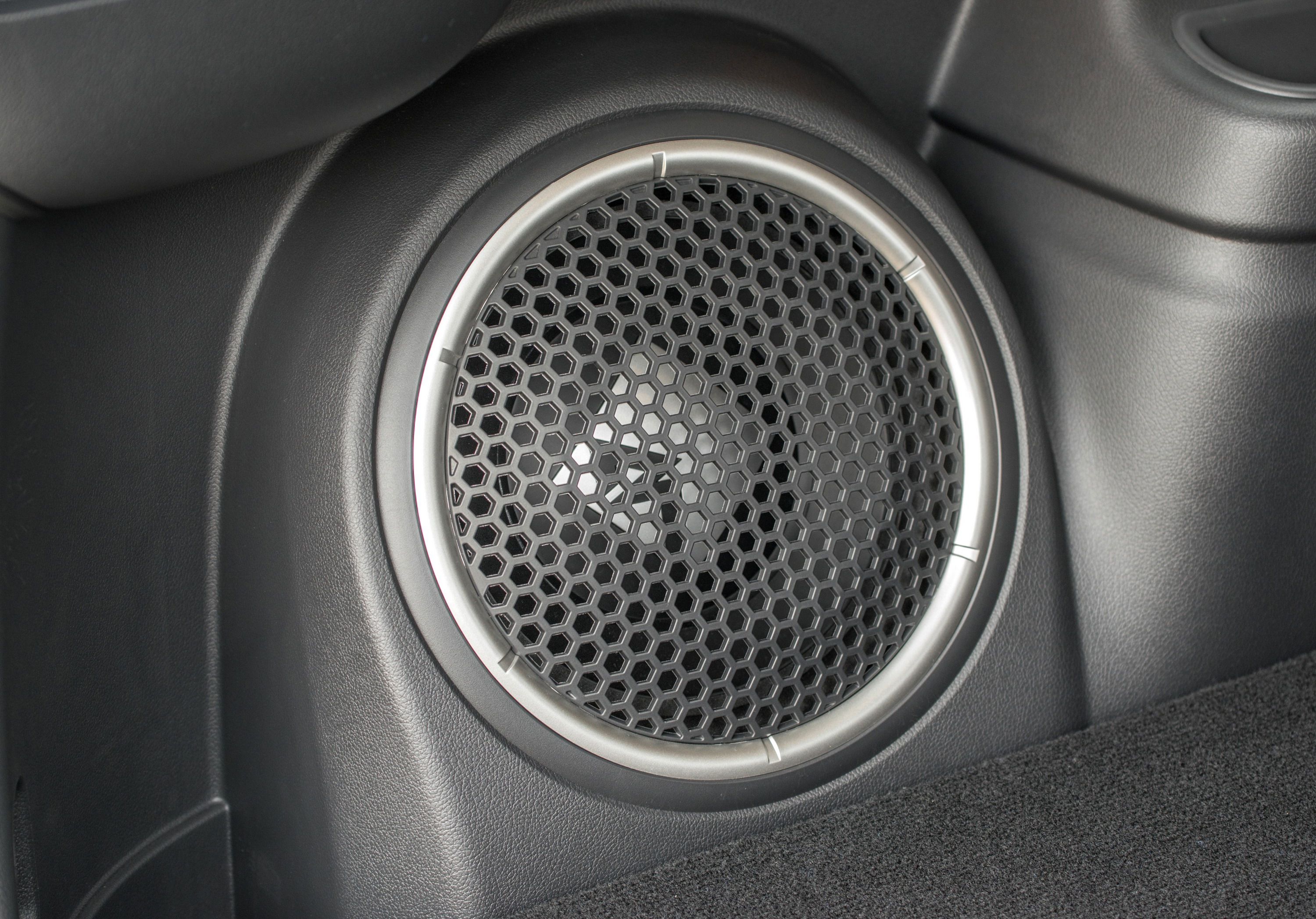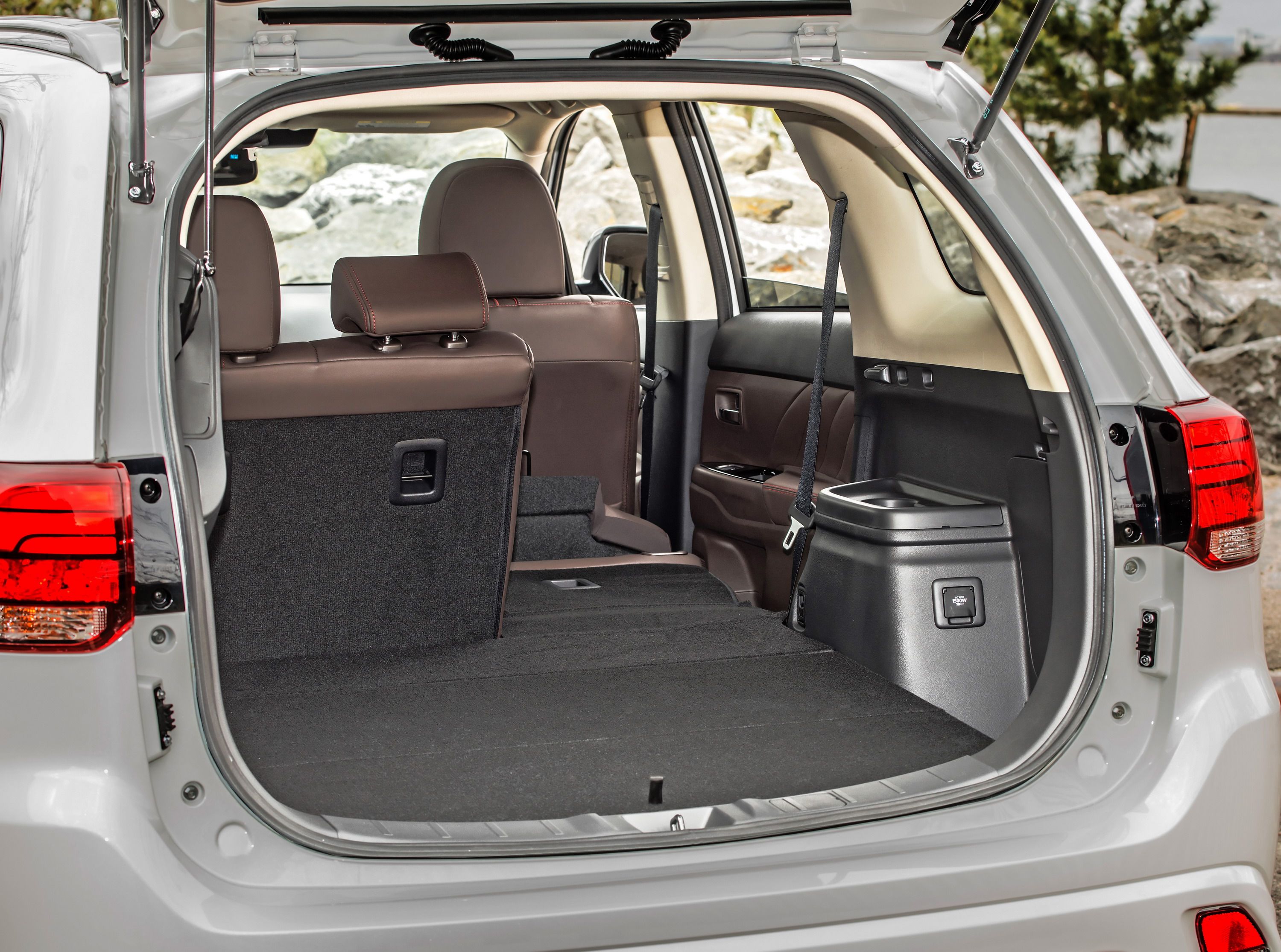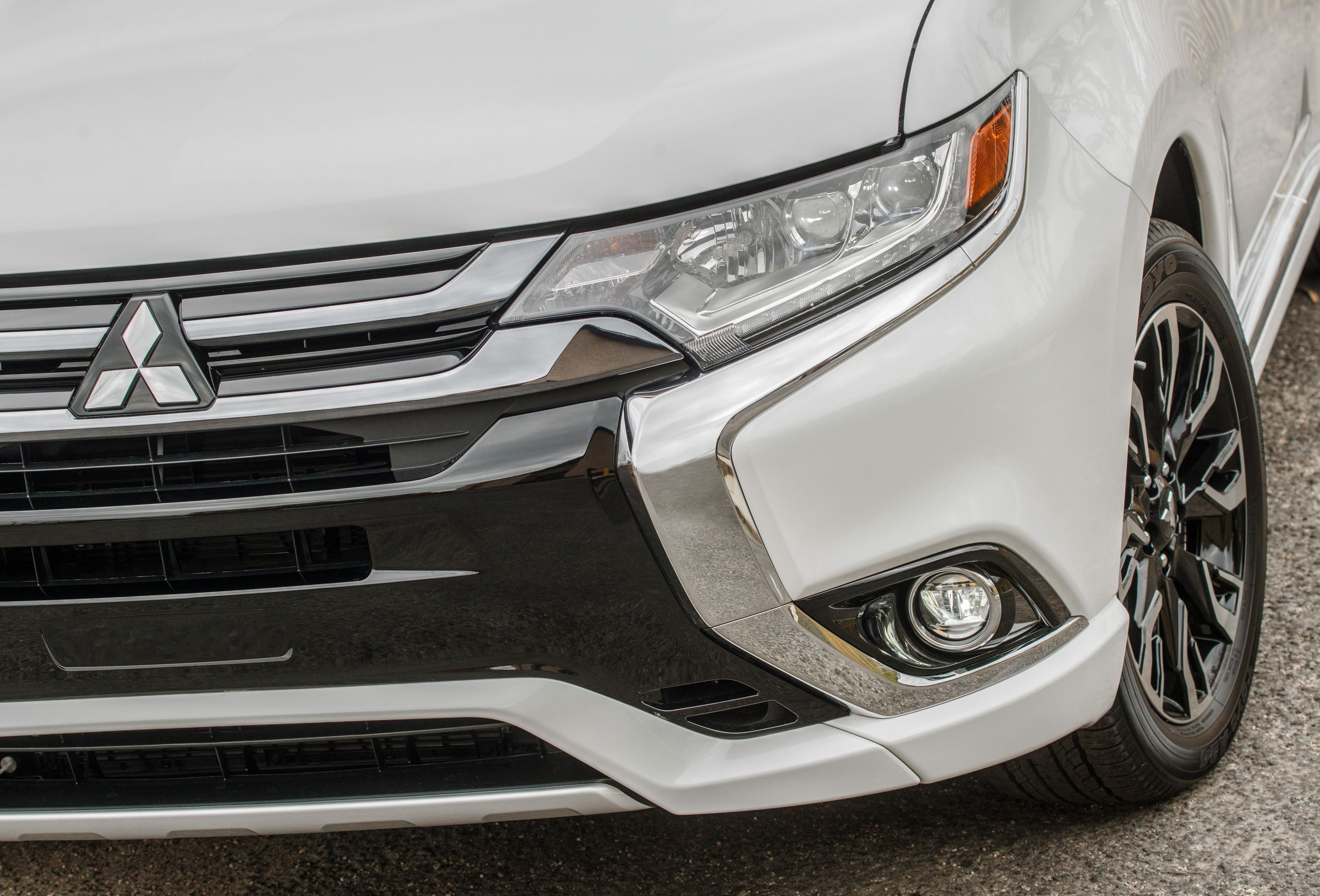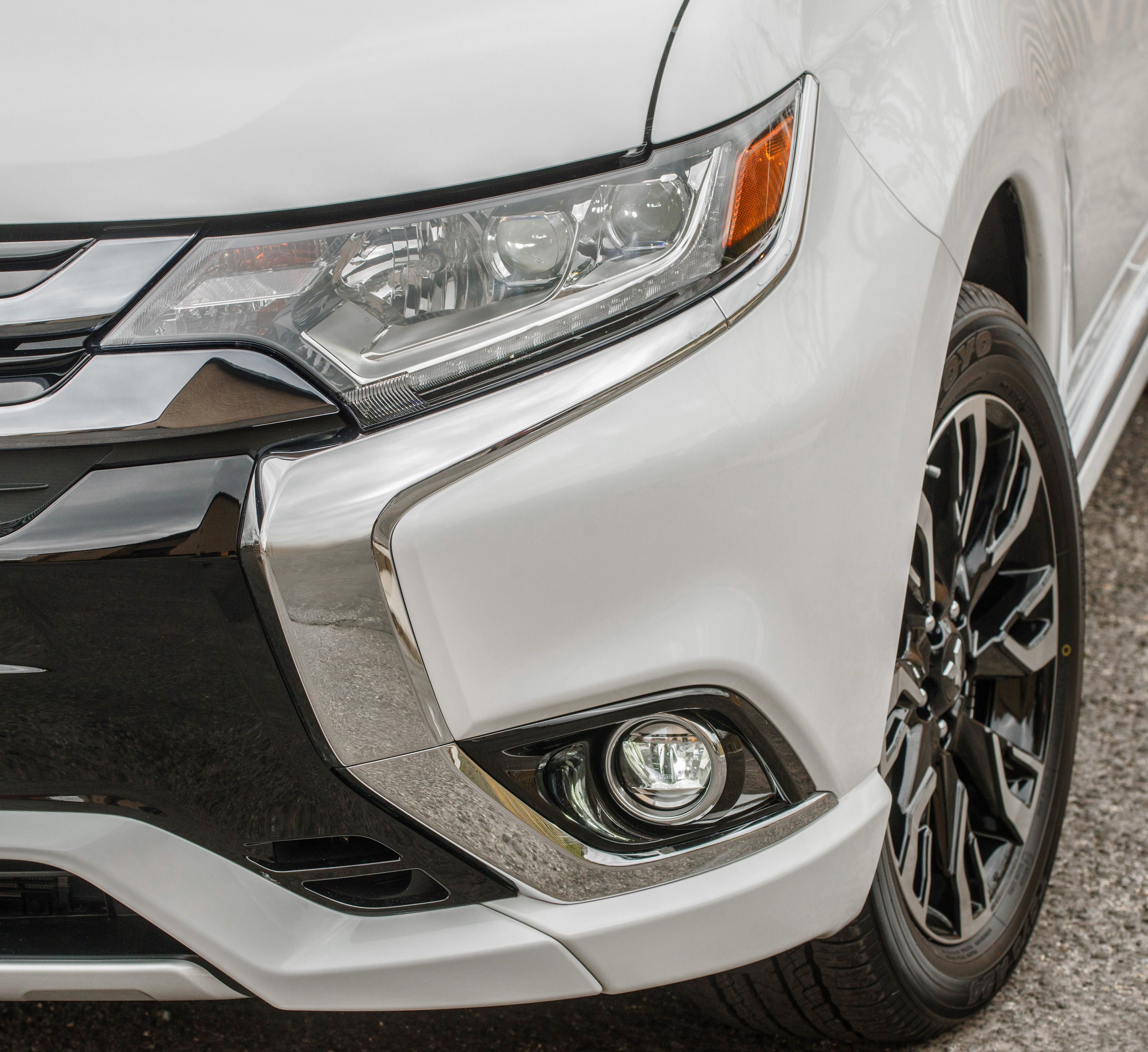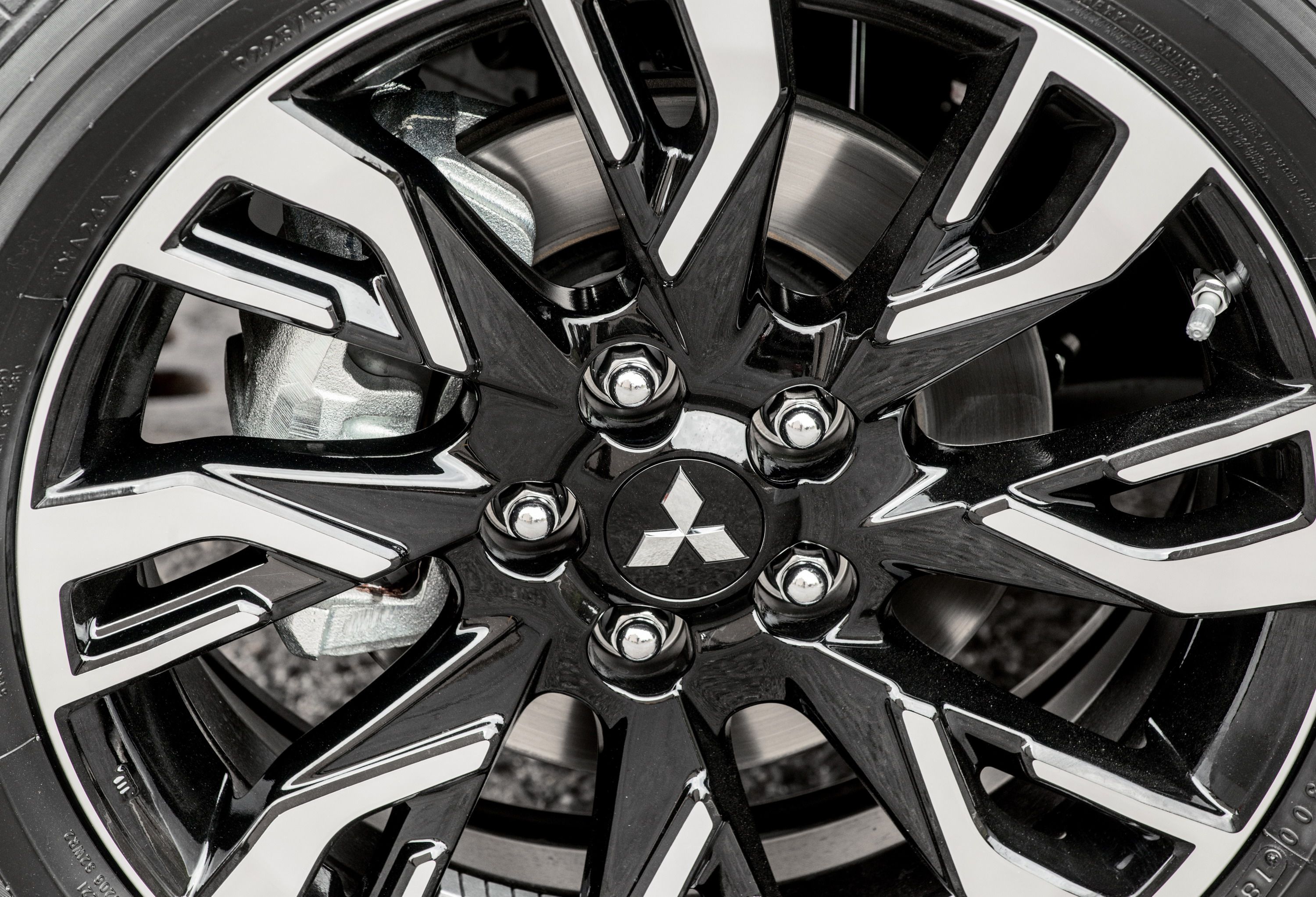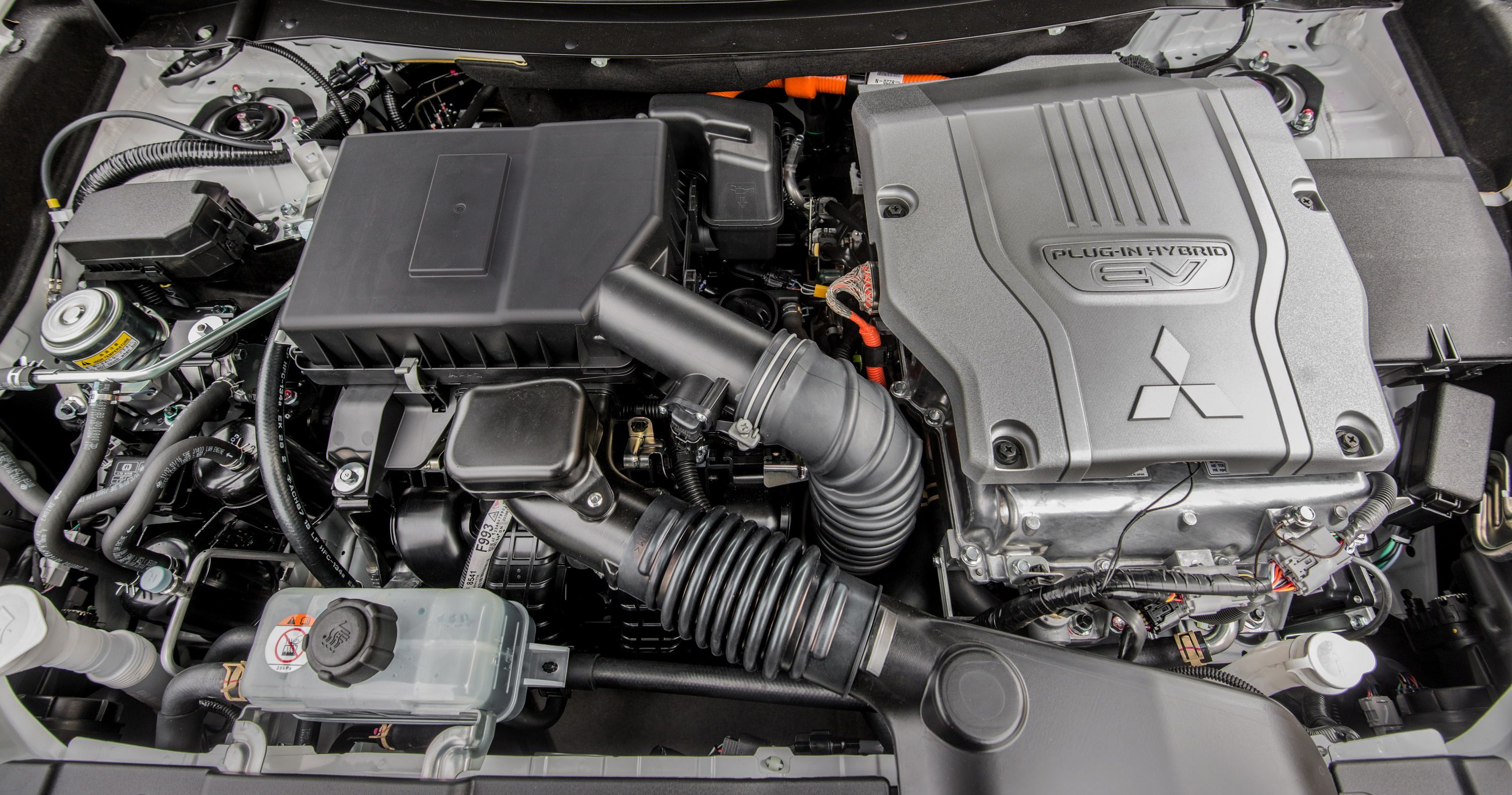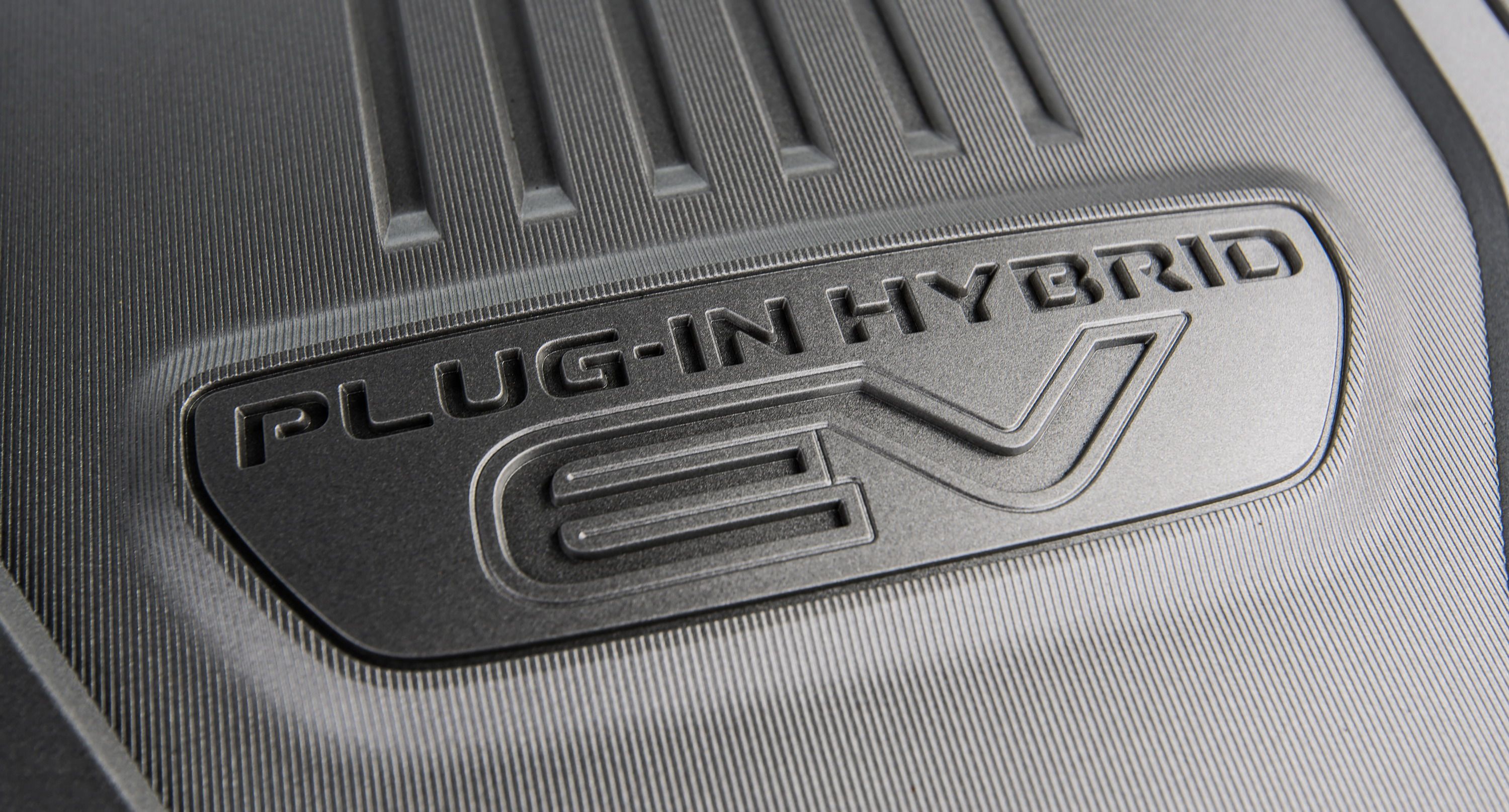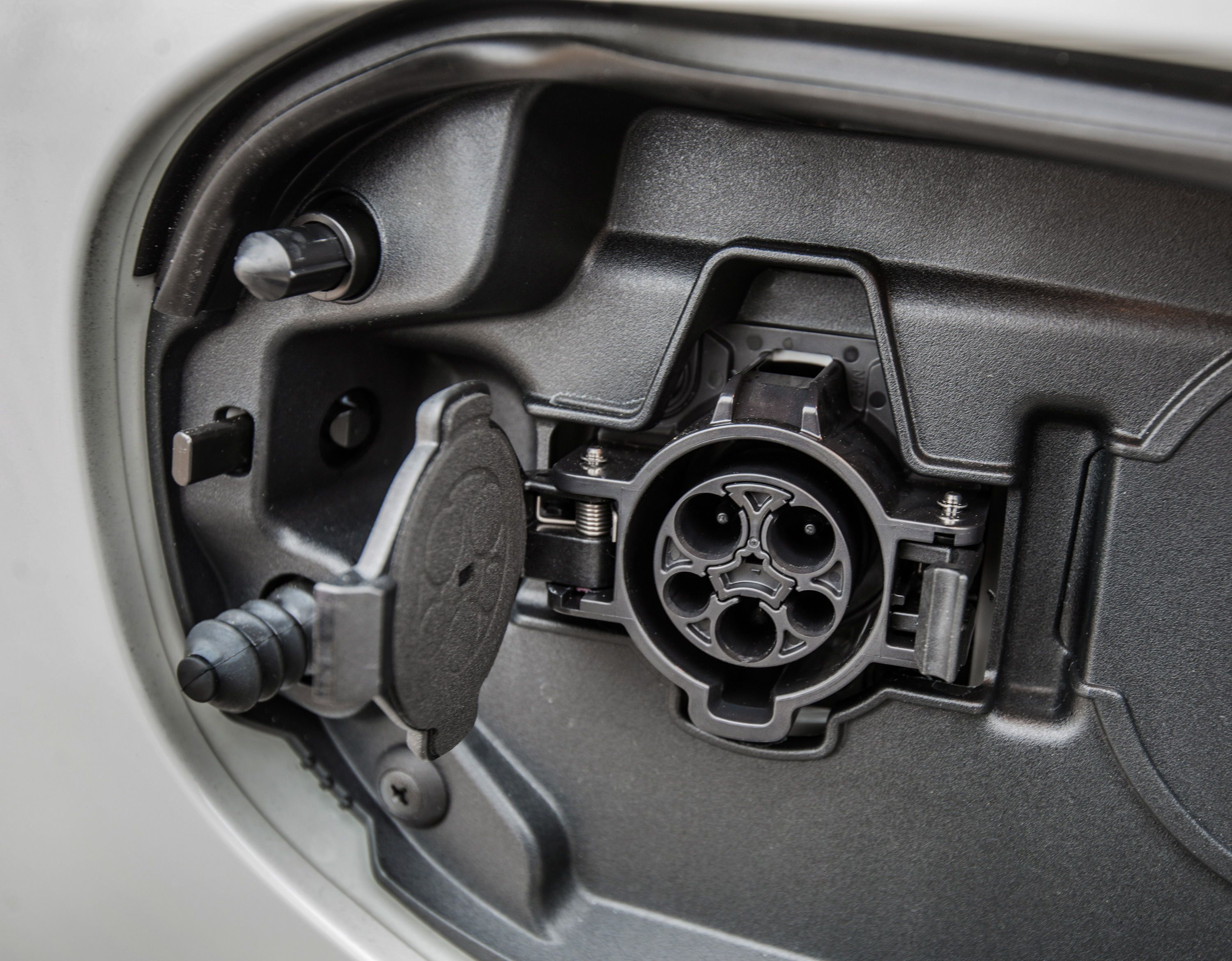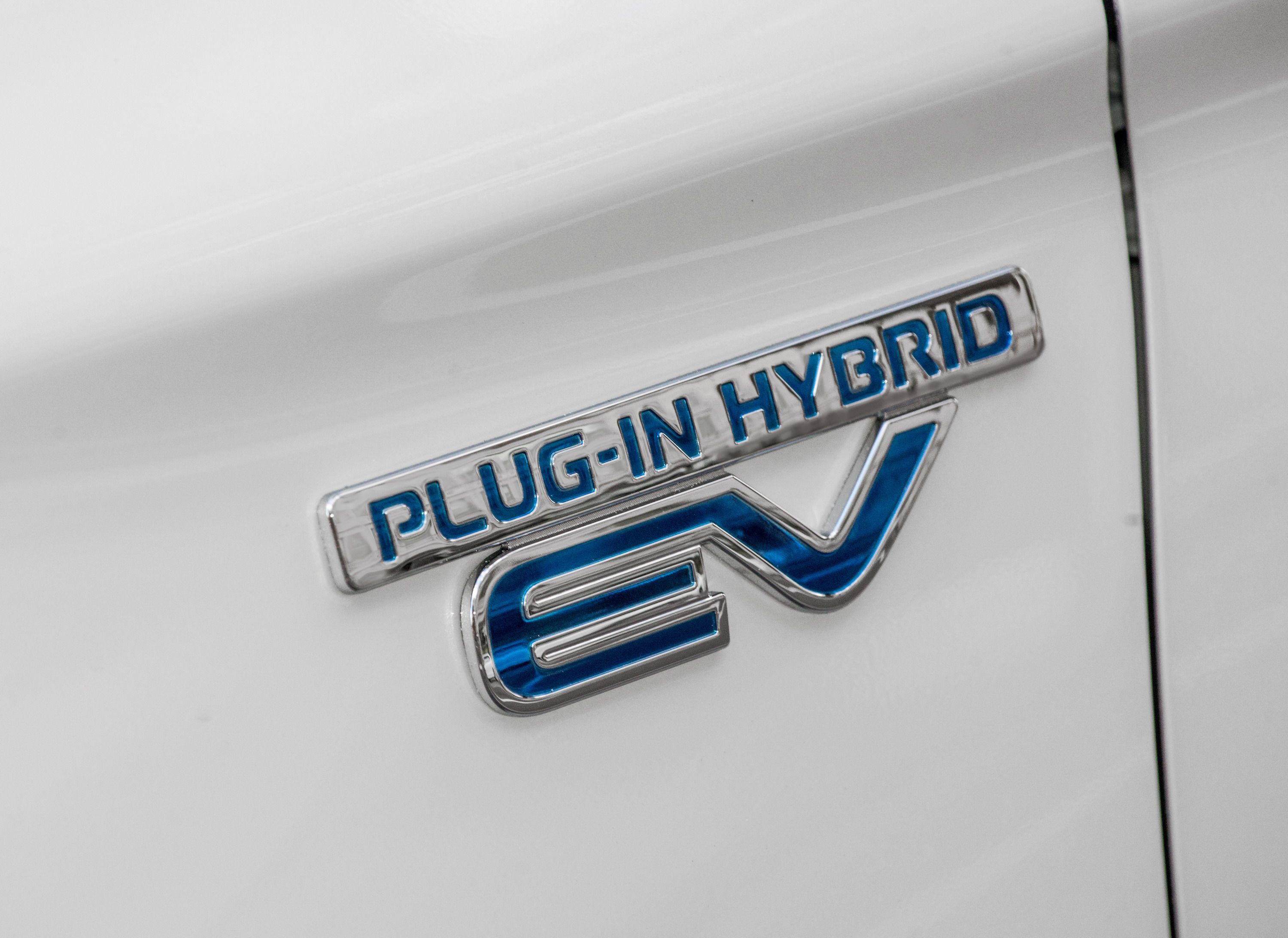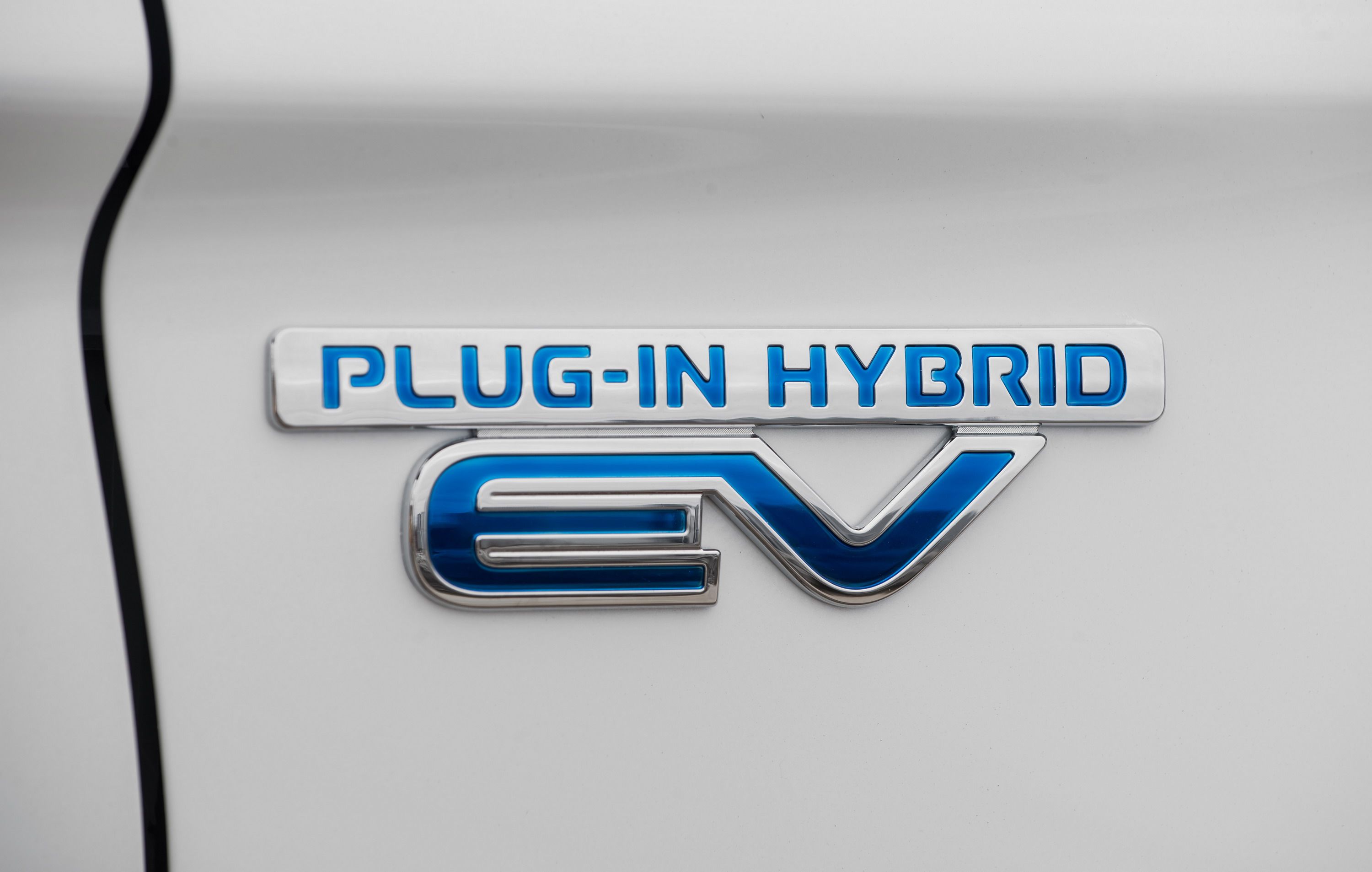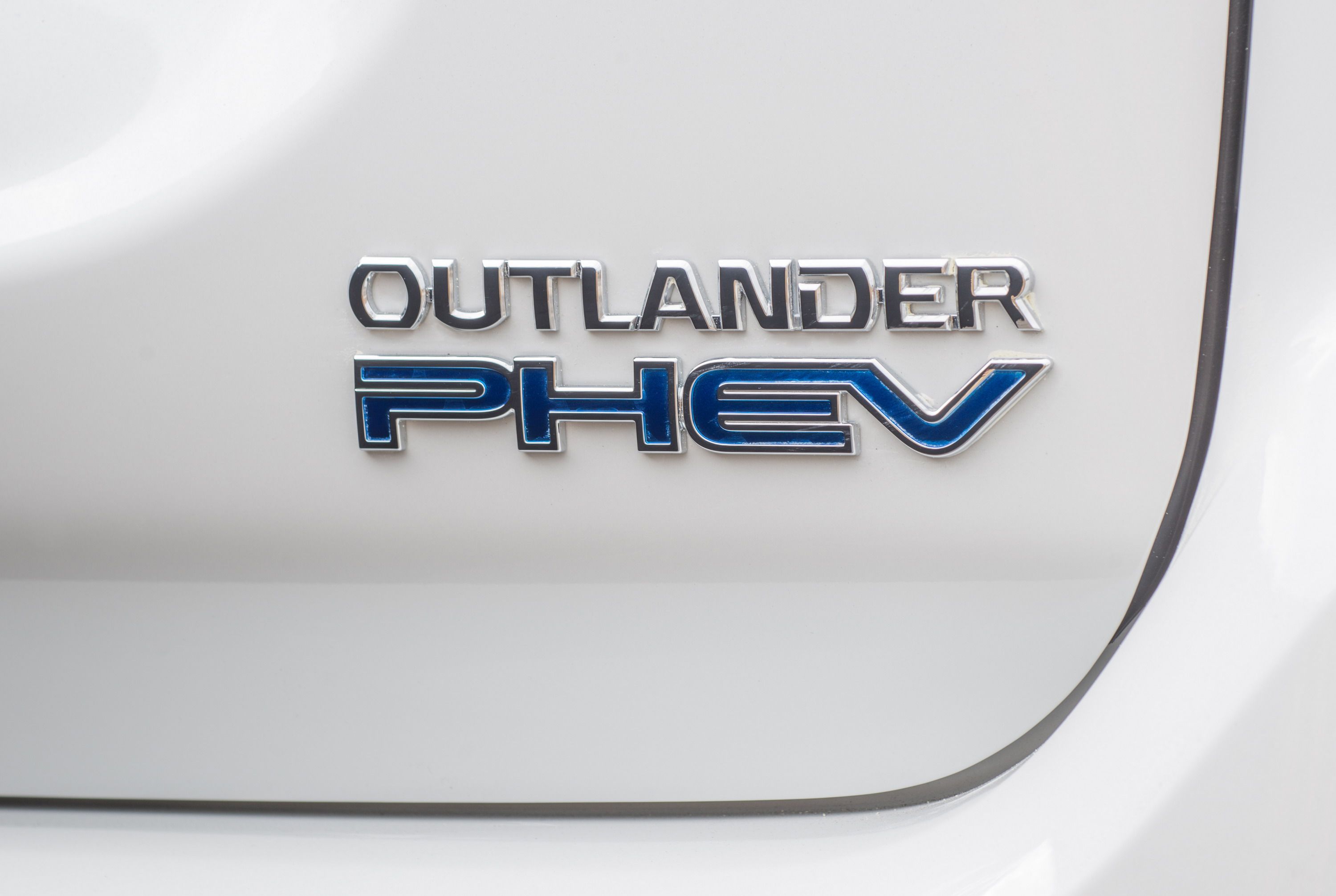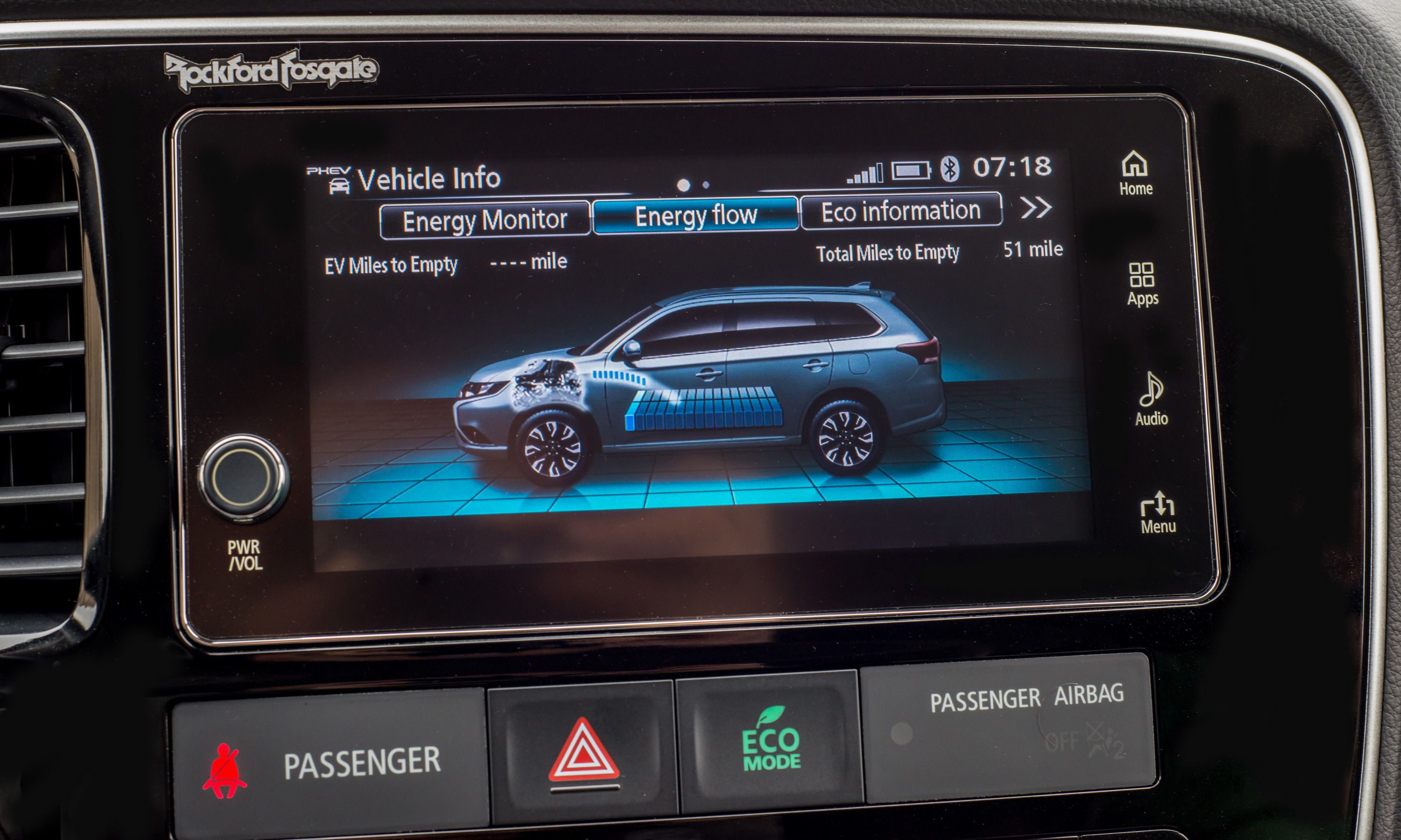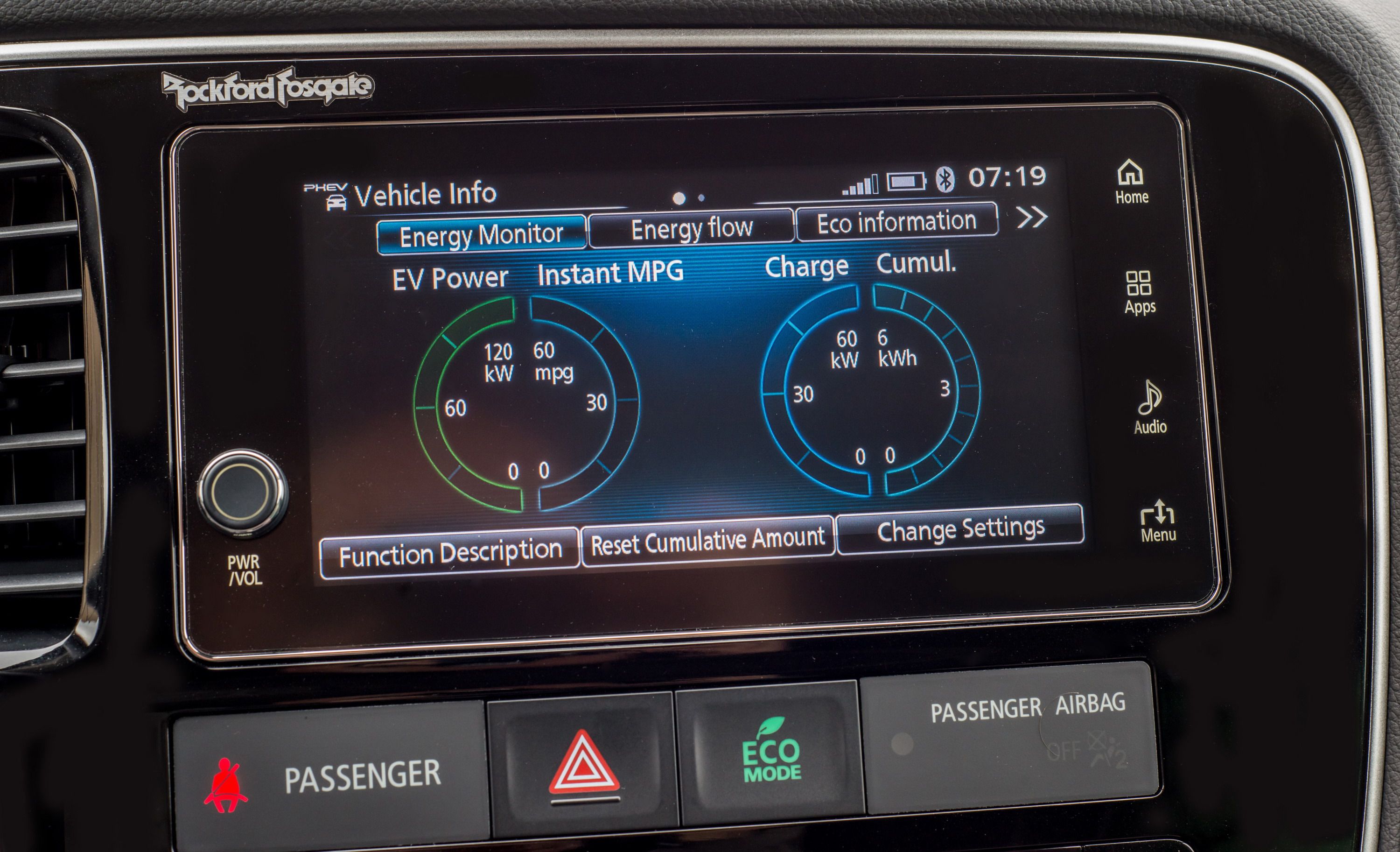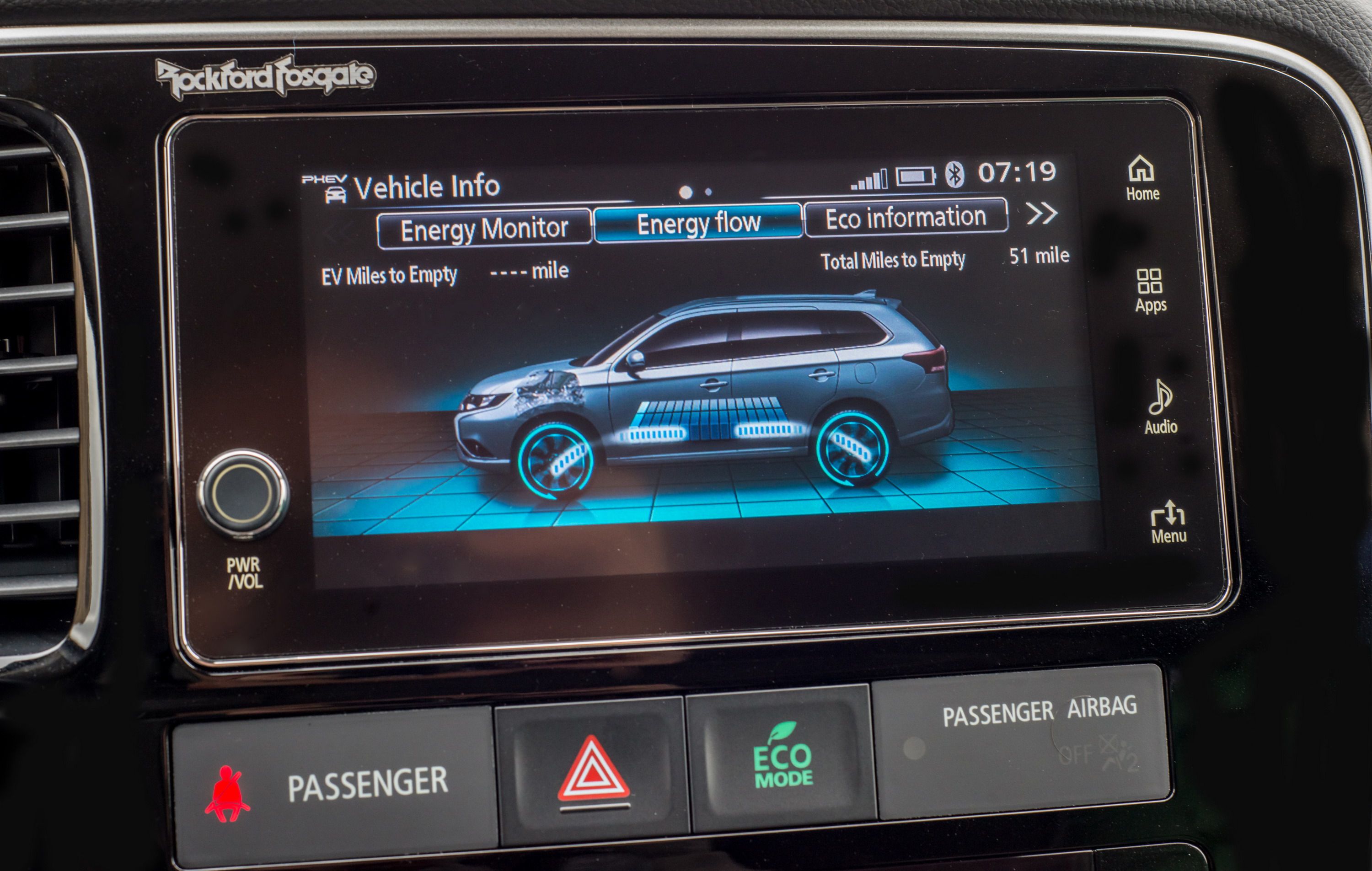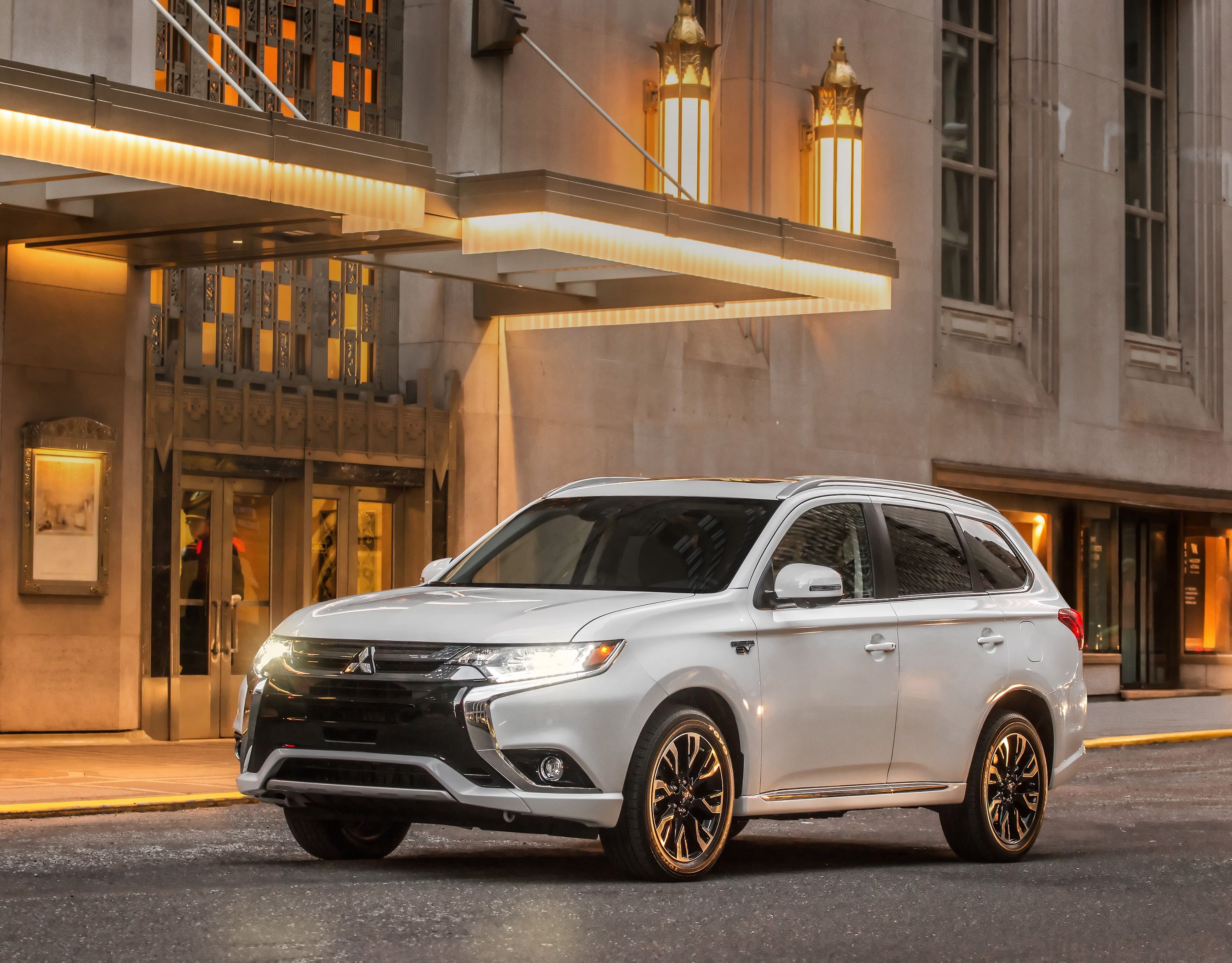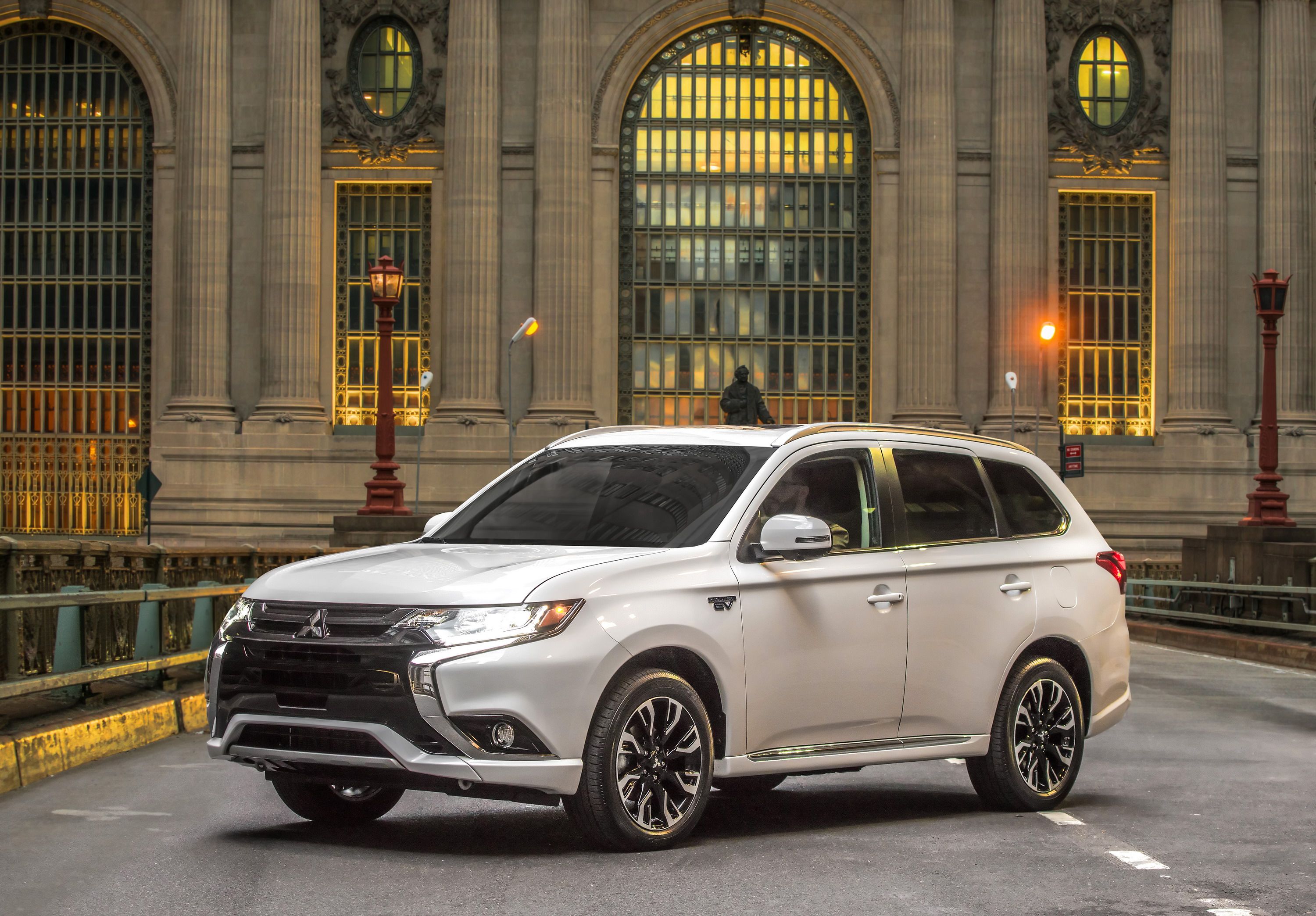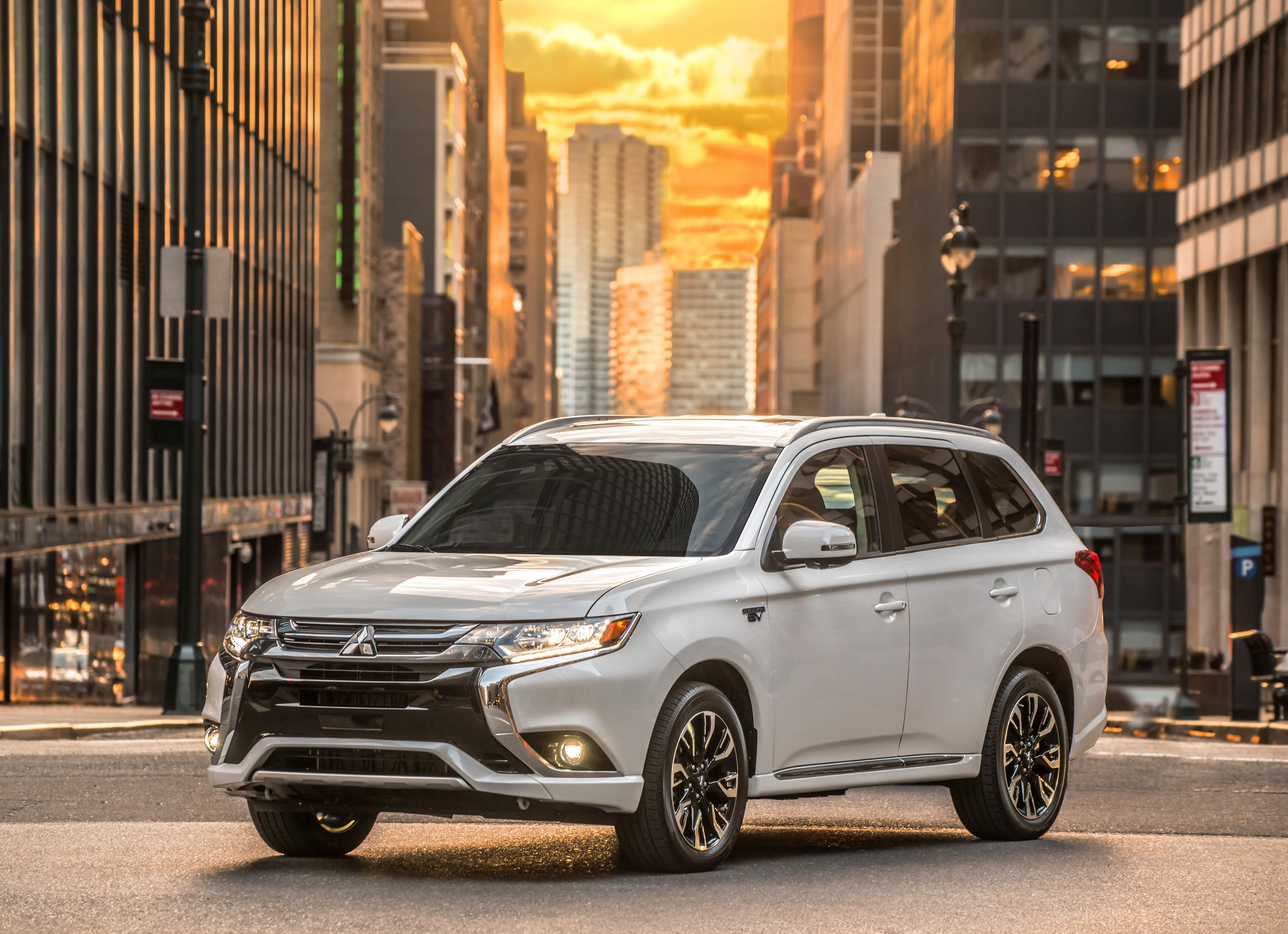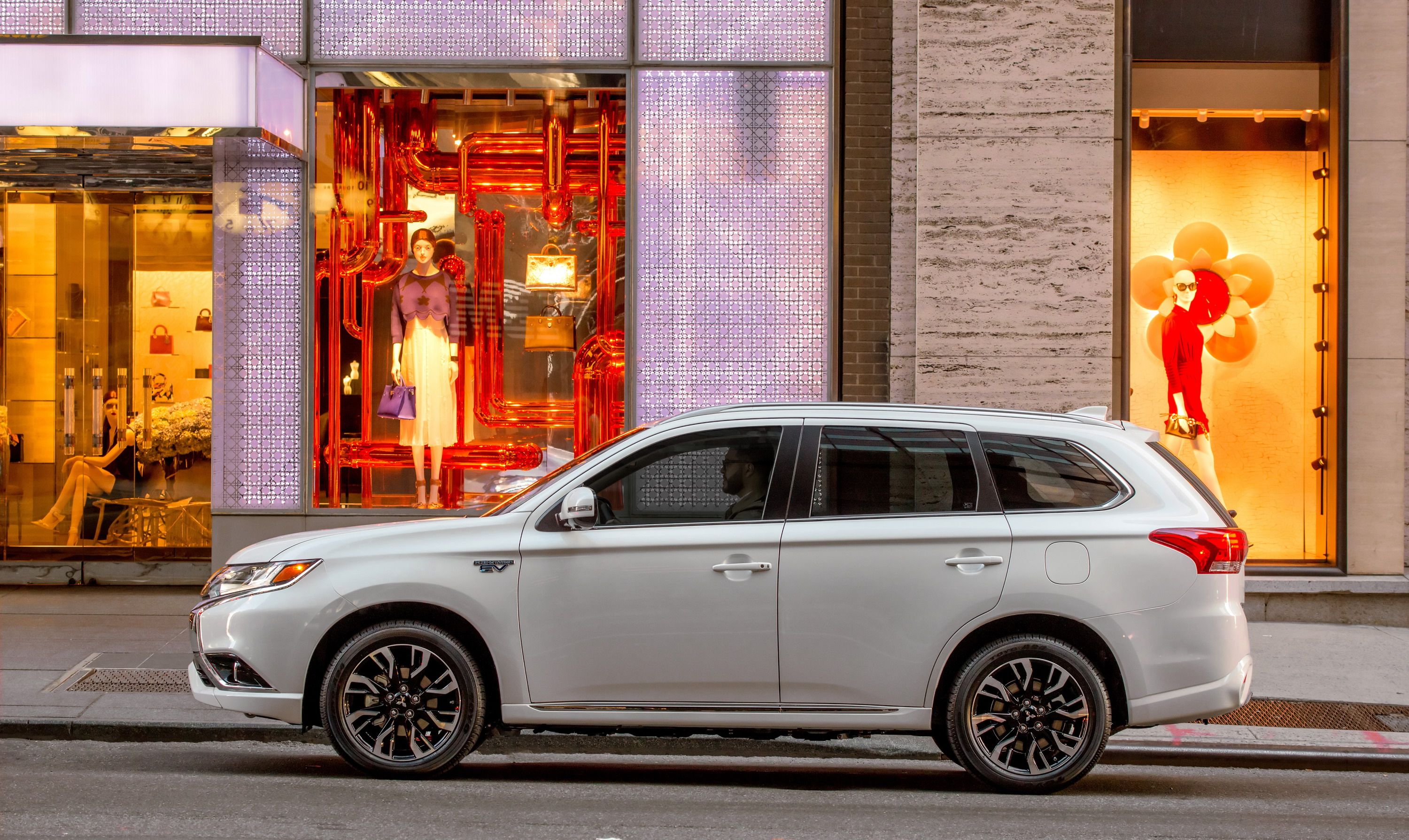At the 2015 Paris Auto Show,->ke227 Mitsubishi->ke58 had a funky looking concept known as the Mitsubishi Outlander PHEV Concept-S. We knew the current Outlander->ke1397 was getting pretty outdated, and as it turned out, this concept->ke169 actually previewed what the 2016 Mitsubishi Outlander would look like after the SUV->ke145 went through a facelift. As expected, the 2016 Outlander is now on sale, sporting a similar design to what we saw on the PHEV Concept-S. Now, with the doors to the New York Auto Show->ke226 wide open, we’ve gotten a look at the Outlander PHEV in production form for the U.S. market.
While the production form does look similar to the 2016 Mitsubishi Outlander, the PHEV actually took more cues from the front end of the concept than the regular Outlander. This means it will be easy to spot the PHEV in a crowd if you know what to look for. For now, some details about the Outlander PHEV are still top secret, but at least we have some official images and info to go on.
Don Swearingen, the Executive Vice President of MMNA, said, “What makes the Mitsubishi Outlander PHEV so special is that it offers the best of both worlds with a balance of electric efficiency and long-range practicality” He continued, “Mitsubishi put its engineering prowess and knowledge to work to create a vehicle that meets the demand of a growing number of consumers who need a car that is capable and environmentally friendly. The Outlander PHEV will offer a high electric range and combined miles per gallon.”
According to Mitsubishi, the PHEV is already the top-selling PHEV in Europe and is the world’s first plug-in hybrid->ke147 SUV. It's said to “deliver SUV capabilities and EV->ke1030 fuel economy.” The Outlander is scheduled to hit showrooms and go on sale here in the U.S. by fall of this year. Before that happens, let’s take a look at the information and pictures we already have.
Continue reading to learn more about the 2017 Mitsubishi Outlander PHEV.
2017 Mitsubishi Outlander PHEV
- Make: Array
- Model: 2017 Mitsubishi Outlander PHEV
- [do not use] Vehicle Model: Array
Exterior
Looking at the exterior of the Outlander PHEV, we see the new two-louver grille design with the Mitsubishi logo perched in the middle. Compared to the concept, the grille louvers have a little more character, as do the headlights. The headlights and grille are the same as those used on the 2016 Outlander. To be honest, Mitsubishi probably should have stayed with the grille design on the PHEV Concept-S, because it did have a much cleaner look to it.
Below the louvers, there's a large opening that sports a gloss black insert with a couple of horizontal louvers crossing the center. The outside edges are lined in chrome, just like the 2016 Outlander, but at the bottom, the fascia slants upwards towards the middle on each side, creating an air dam in the middle – a feature the standard Outlander doesn’t have. The corner vents on the fascia are the same shape, but featured LED fog lights as opposed to the round units on the standard model.
To the side, there isn’t a whole lot of change. That same distinctive body line runs from the corner of the headlight assembly to the corner of the wraparound taillight assembly. Down below, the PHEV has lost the cladding on the doors in favor of a thin chrome strip that's placed on the top of the side skirts. There's also a PHEV badge on the fender. The rear of the Outlander PHEV is identical to that of the standard 2016 Outlander. This means the PHEV lost the wide taillight assembly and chrome trim from the PHEV Concept-S. It’s rather unfortunate, as that was a nice look for the rear end of the concept, and would certainly have looked great on the production model.
Interior
If you were expecting to see anything new in the PHEV’s passenger compartment, you’re going to be disappointed. Inside, the interior is practically identical to the standard Outlander. It did receive the same updates as the standard Outlander, including new seating surfaces, a redesigned steering wheel, rear folding seat, display audio system and an auto-dimming rearview mirror.
There are a number of safety and convenience features available on the PHEV. Things like a Multi-Around view Camera Monitor, Blind Spot Monitoring with Rear Cross-Traffic Alert, Forward Collision Mitigation with pedestrian detection, and smartphone connectivity via Apple CarPlay and Android Auto are all available options. Surely, this isn’t really anything to write home about, but the highlight of the PHEV is in the drivetrain department, so let’s move on to the next section.
Drivetrain
Mitsubishi hasn’t provided too many specifics about the drivetrain yet, but we do know that it will be powered by a 2.0-liter gasoline engine and two high-performance electric motors. The motors are mounted separately on the front and rear axles, allowing “precise, responsive” four-wheel-drive performance. This S-AWC (Super All-Wheel Control) system is based on the system used in the Lancer Evolution, but modified specifically for use in the Outlander PHEV for “maximum performance, efficiency, tractability, and safety.”
There are three selectable drive modes, including EV, Series Hybrid, and Parallel Hybrid. In EV mode, the PHEV runs only on electric power supplied by the high-capacity 12-kWh lithium-ion battery pack. In Series Hybrid mode, the PHEV is propelled by the electric motors, but the 2.0-liter engine is used as a generator to supply power back to the battery pack. In Parallel Hybrid mode, the PHEV is propelled by the 2.0-liter engine with assistance from the two electric motors. The drive modes are automatically selected by the vehicle, depending on “road conditions and other factors.” The PHEV also has regenerative braking mode, which, as you probably know, converts lost energy from braking into electricity to charge the battery pack.
Mitsubishi hasn’t provided any specifics about horsepower output, torque output, or performance, but it has said it'll offer a high all-electric range and combined miles per gallon. Needless to say, we’ll update you with details about performance as soon as they become available.
Prices
While details about pricing for the Outlander PHEV have yet to be released, the current Outlander starts out at $22,995 and climbs to $30,995 for the range-topping GT S-AWC. It’s hard to say where Mitsubishi will place the Outlander PHEV in the lineup, but looking at European prices, it'll probably take the place of the GT S-AWC as the range-topping model. In Germany, the Outlander PHEV goes for €39,990, which at current conversion rates (03/24/2016) is equal to $44,700 – $14,000 more than the U.S.-spec GT S-AWC. I guess Mitsubishi takes a lot of pride in its plug-in SUV. I suspect the pricing will be a little different here in the U.S., because a $14,000 jump in price over the current range-topping model seems a little excessive, regardless of its hybrid nature.
Competition
As far as plug-in hybrids go, there really isn’t anything the Mitsubishi Outlander can compete with. The main plug-in SUVs available now are from luxury manufacturers like BMW and Porsche. So, considering Mitsubishi isn’t exactly on the same level, we’re forced to make do with some huge price differences.
BMW X5 xDrive40e
I chose to go with the BMW X5 here, because outside of all-electric models like the Kia Soul EV, for example, it's the cheapest plug-in SUV you can get. The only plug-in version of the X5 available is the X5 xDrive40e. It's powered by a 2.0-liter, turbocharged, four-cylinder and a lithium-ion electric motor. As of this writing, the xDrive40e starts at $62,100, which is about $20,000 more than the Outlander PHEV in Europe right now. For that price, you get a total of 308 horsepower, and a 0-to-60 mph sprint in just 6.5 seconds. Chances are the X5 will be more powerful and quicker than the PHEV, but we’ll have to wait until the official U.S. specs come out to know for sure.
Read our full review on the BMW X5 xDrive40e here.
Conclusion
If you’re in the market for a plug-in SUV, you won’t find too many options. Of course, there's the X5 that we just discussed, and there's the Porsche Cayenne S E-Hybrid, but that's well out of the PHEV’s league. Even the Volvo XC90 T8, which offers an all-electric range of 17 miles, comes in just shy of $70,000, which puts it in a different competition bracket as well. Price-wise, the Outlander PHEV will pretty much have the market to itself. If you’re focused only on price and forget completely about brand names, luxury, and material appointments, the PHEV might be for you. If you’re someone who goes for more luxurious options, you’ll probably find yourself looking right past Mitsubishi's resident plug-in SUV.
All of that said, if the Outlander PHEV takes on a similar price point as its European counterpart, I doubt it's going to perform well sales-wise here in the U.S. An increase of $14,000 just for 14 or 15 miles of all-electric range (the average among luxurious plug-in SUVs) just seems like a hard sum to cough up to go hybrid. I think Mitsubishi is going to find that it will get some sales, but until plug-in SUVs become much more desirable, this model won’t be all that common on the street.

